

Japan Reopens to Visa-free Individual Tourism From October 11, 2022!
More than 2 years and a half!
The Japanese archipelago was closed to foreign tourists during more than 30 months / nearly 1,000 days: an unheard-of situation, especially for such a long time, that frustrated travelers and weakened many tour operators and travel agencies.
However, the wait is closing to the end: Japanese Prime Minister Fumio Kishida announced on September 22 from New York that visa-free individual tourism in Japan will resume from October 11, 2022 . As usual, the country took its time to act; it is one of the latest countries in the world to reopen its borders to tourism, and the very last (and late) of the G7.
Let’s review all the aspects involved by this long-awaited good news!
🎌 When will Japanese borders will reopen to visa-free tourism?
Traveling in Japan without constraint as a tourist is possible from October 11, 2022 .
The Japanese government has been working on a borders reopening schedule since April 27 to help revive the economy. The reopening to tourism was very slow and gradual, but there are not any constraint anymore and anyone can travel freely to Japan.
Who can travel to Japan?
Anyone, regardless of citizenship , can go to Japan.
Most of people in the world regardless their citizenship can be admitted in Japan, but only nationals from the blue countries list can do so without constraint. This list is quite large, with 128 countries, including Canada and the United States for example.
For the other colors (yellow and red), some restrictions still apply, such as vaccination / PCR test before traveling, and quarantine upon arrival.
🛂 Is a visa required to enter the Japanese territory
No, getting a tourism visa is not mandatory anymore from October 11, 2022 : a valid passport is enough for any stay shorter than 3 months with touristic purpose.
Tourist visa had been reintroduced on June 2022 and it was necessary to get sponsorship by a travel agent.
From October 11, the visa waiver system between Japan and 68 other countries in the world is restored. From this date on, it will be possible again to stay up to 90 days in Japan, without tedious paperwork at the Embassy or the Consulate: you will just have your passport stamped upon arrival in Japan.
💉 Is Covid vaccine required?
No, being vaccinated against Covid is not mandatory to enter in Japan.
Regardless of the number of vaccine doses you received, you are likely to be admitted in Japan. However, if you got your 3 shots, you will be exempted from doing a PCR test before flying.
Note that having been infected by Covid does not count as a vaccine dose!
Vaccines recognized in Japan are:
- Comirnaty (Pfizer)
- Spikevax (Moderna)
- Vaxzeveria (AstraZeneca)
- Jcovden (Janssen)
- Nuvaxovid (Novavax)
- Covaxin (Bharat Biotech)

👩🔬 Is a Covid PCR test mandatory?
A negative PCR test shortly before arrival is required only for travelers who did not get three vaccine doses.
The Japanese immigration asks travelers to prove they don’t have Covid-19 . Travelers must submit this completed form after doing a PCR test (with a swab in the nose) within 72 hours / 3 days before departure and getting a negative result. However, people who received 3 vaccine shots don’t need to do a PCR test.
PCR testing upon arrival in Japan has been scrapped since June 2022, greatly improving the procedures for leaving the airport.
Only Chinese citizens or people who transited by China in the 7 days prior their trip to Japan must do a Covid test upon arrival in the archipelago (and a 7-days quarantine if the test comes out positive).
🧒 What about PCR tests / vaccines for minor children?
Minor children don’t need to be vaccinated , and in some cases can be exempted of PCR test.
In mid-September, the Japanese Ministry of Health provided information about babies / children / teenagers traveling to Japan:
- If the underage child enters in Japan with a parent who got their 3 doses, then the child is also considered being fully vaccinated, even if they are not. The negative PCR test before flying is therefore not required.
- If a child under 6 years old enters in Japan with a parent who did not get their 3 shots, but do have a negative PCR test, then the child is also considered having a negative PCR test, even if they haven’t done it.
In every other cases, the underage child must either prove that they have received 3 vaccine doses, or provide a negative PCR test made less than 72 hours prior to departure to Japan.
🏨 Is there a quarantine for tourists arriving in Japan?
No, there is no mandatory quarantine or self-isolation after landing in Japan.
It is therefore possible to:
- Stay a few days to visit Tokyo before going to Hakone , Kyoto or in any other prefecture in Japan,
- Take the Shinkansen bullet train directly after landing thanks to the JR Pass, or,
- Just make a stopover at the airport to hop on a domestic flight.
In short, tourists are free as birds as soon as arrival!
🔢 Is there a daily cap for travelers?
No, there is no more entry daily cap in Japan.
Since March 2020, Japan has implemented a daily cap for overseas visitors, that reached 50,000 in September. From October 11, there will be no daily entry cap in the archipelago.
For reference, in 2019, the last "norma" year before Covid, the Japanese territory welcomed on average ~140,000 daily entries, including ~87,000 foreign visitors (~80% were from Asia : ~25% China, ~19% South Korea and ~14% Taiwan).
🧍 Is it mandatory to take part to a package group tour?
No , package group tours were just part of a single test in spring 🌸 2022.
This test was conducted only for a few days overlapping the end of May and early June 2022.
📋 Is a travel insurance mandatory?
Yes , but most of travelers already have one.
Travelers must be covered by their own health insurance. This service is offered to Visa or Mastercard clients with purchases in connection to the trip (flights tickets, accommodation…) made with a bank card 💳 , especially if it is a "Gold" / "Premier".
Naturally, you may want to purchase a cancellation insurance:

📱 Do I need to install a specific app to enter in Japan?
No , this obligation was lifted in October 2022.
During Covid, the Japanese government required overseas visitors to install on their smartphone 📱 :
- MySOS to register information regarding vaccine / PCR test prior to arrival and save time at the airport in Japan ("fast track" system);
- COCOA for contact cases tracing, but the app was discontinued in September 2022.
It is however recommended to register through Visit Japan Webto save time upon arrival in Japan.
As many Wi-Fi hot-spots have disappeared due to the Covid period, it is all the more useful to book a Pocket Wi-Fi in advance to make sure to always have an unlimited high-speed access to the internet 📶 during your trip:

🤒 Is there a body temperature check upon arrival in Japan?
No , this mesure was discontinued before the first easing to tourists at the end of spring.
A health center for foreign tourists is based in Tokyo, and is the reference if a question or problem arised (fever, Coronavirus 🦠 symptoms...)
😷 Is masking mandatory in Japan?
Generally no , but some places may require their visitors to do so.
On a legal basis, wearing a face mask 😷 is not mandatory in Japan. However, in the wake of the reopening, the government allowed hotels 🏨 to refuse customers who would not wear a mask at their premises.
Regardless, wearing a face covering is akin to a social duty in the archipelago. Many Japanese wear one permanently, even in the outdoors. Thus, the Japanese government published a document to sum up all the situations where wearing a mask was a necessity. In addition, many places ( temples , shops, etc.) require that people wear a mask on their grounds.
Therefore, wearing a face mask as often as possible is not required but socially desirable, especially when indoor.

🗾 Are there prefectures or places that are off-limits?
No , Japan’s whole territory is opened to travelers.
There is no geographical restriction for traveling in Japan, and the Japan Rail pass is still a convenient asset:

🏥 Is it safe to travel in Japan in 2022 and 2023 with the Coronavirus?
Yes, Japan is one of the countries that best resisted against the Coronavirus . It is way safer to travel in Japan than in many other places in the world.
The spreading was contained since the beginning of the pandemic. With only 34 deceased for 100,000 inhabitants, the Japanese succeeded in protecting themselves thanks to basic precautionary measures:
- The widespread use of sanitary face masks;
- The natural social distancing; and,
- An unparalleled civic-minded attitude.

Moreover, Japan benefits from a solid and modern health system that can treat with great care the severe forms of Covid, as well as any other disease.
From May 8, 2023, the Coronavirus will be downgraded from Category II to a Category V disease, like the seasonal flu. Which likely means:
- No more PCR Test required to enter Japan;
- No more indoor face mask mandate;
- No more sudden border closure.
❌ Are there places still closed in Tokyo or anywhere else?
No, everything is open as Japan has been resuming usual activities for a long time.
While there has been no lock-down in Japan, some museums or themed parks did close for a few weeks in spring 2020. Events (conventions, matsuri, sports competitions) may have been canceled, aired on line only, or postponed. We have a list of places closed at the moment, but most closures are not related to Covid anymore.
Now, the only difference with 2019 and the previous years are:
- Wearing a face mask is sometimes mandatory to enter some places;
- Staff may (seldom) take people’s temperature with a no-touch thermometer at the entrance of shops;
- Hand sanitizer is often freely available.
But this measures are certainly not specific to Japan.

🙇🏻 Are Japanese people welcoming to foreigners?
Yes, Japanese people have an unparalleled hospitality culture .
In Japanese, there is the concept of omotenashi and it encompasses the idea of welcoming the other in a broader sense. Moreover, the tourism industry has greatly suffered since March 2020, as well as the Japanese economy, all the more with the recent inflation.
Many Japanese are eager to welcome back tourism on their country.
💣 What is the impact of the war in Ukraine on the trip to Japan?
Direct flights last 2 more hours.
Since February 2022 and the beginning of the crisis in Ukraine, Russia’s airspace is off-limits to airways flying to Japan. Flights must travel by the southern route, which lengthen the flight ✈️ duration for a total 14~15 hours for a direct flight (with Air France, Japan Airlines and All Nippon Airways).
Japanese airways’ suspended connections with Europe (except for London), resumed in early may. Other companies, like Qatar, Emirates, Etihad, are not impacted as they were already using the southern route.
💴 Is it more costly to travel to Japan after Covid?
Yes, unfortunately , due to several factors.
The budget for a trip to Japan increased due to:
- More expensive flight tickets, due to kerosene costs, longer routes and the rule of supply / demand;
- Accommodation also rose their prices to compensate the low revenues since March 2020.

However, the Yen 💴 has been very weak for a few months compared to Euro and Dollar, which results in unexpected advantages for international travelers in Japan on services such as:
- The must-have to order before departure: transportation Passes and Pocket Wi-Fi;
- Private guides: airport guidance and / or bilingual private tours in cities or on excursions;
- Tickets and admissions to temples, museums and other places to visit;
- Restaurants;
Now is the good moment to buy Yens before going to Japan.
⚠️ How to postpone an already booked travel?
If your travel was scheduled by October 2022 included, you may need to postpone it .
Do not wait to secure new holiday dates as many travelers are in the same situation:
- If you booked everything by yourself: you must contact each service provider (airway, accommodation, guide, etc.) to modify every items in your plan, with modification fees to pay;
- If you booked a full travel with a travel agent: just contact them to change the dates and the agency will take care of all the modifications for you, usually without additional fee (unless you want to lengthen the trip, upgrade or add services).
✈️ How to plan a post-Covid travel to Japan?
It is possible to organize a trip to Japan alone or with a specialized travel agency .
If you have time but a limited budget, you can prepare your travel in Japan by yourself, especially if you use our many articles on Kanpai.

However, the experience from the last 2 years and a half has proved that travelers who prepared their holidays alone had a harder time to postpone or cancel their trip.
While it might be a little bit more expensive, reaching out to a Japan-specialized travel agency offers a greatly enjoyable peace of mind as you hire an expert of the destination who will take care of everything:
- Understanding your needs;
- Organizing and booking according to what you want;
- Postponing if necessary, with no additional charge; and,
- Support if any problem arises.

It also helps supporting the tourism industry, that was one of the hardest hit by Covid on economic level, but also the local economy as any good Japan-specialized travel agency is working with sister companies in the archipelago.
- Flights and Airports
- Accommodation
- Transportation
- Internet & Phones
- Budget and money
- Japanese Food
- Visit with Kids
- Seasons: spring / summer / autumn / winter
- Weather forecast
- Time in Japan
- Holidays & Festivals
- Natural Disasters
- Customs and Duties
- Works and Closures
- From April 14 to 15 -- Sanno Matsuri (the Spring Takayama Festival)
- From April 29 to 5 May -- Japanese Golden Week
- May 12 -- Mother's Day in Japan
- June 6 -- Beginning of the rainy season (Tsuyu) in Japan
- June 21 -- Summer starts in Japan
- From July 1 to 31 -- Gion Matsuri Festival in Kyoto with float processions on July 17 and 24
- Tokyo : Shinjuku , Shibuya , Harajuku , Asakusa , Akihabara , Odaiba , Ikebukuro , Ueno , Roppongi , Chiyoda , Ryogoku ...
- Around Tokyo: Kamakura , Nikko , Hakone , Mount Fuji , Mount Takao , Yokohama ...
- Kansai: Kyoto , Nara , Osaka , Mount Koya , Himeji , Kobe , Kinosaki , Kumano Kodo , Ise ...
- Japanese Alps: Kanazawa , Matsumoto , Takayama , Shirakawa-go , Nakasendo ...
- West: Hiroshima , Miyajima , Shikoku , Onomichi , Naoshima , Izumo , Kurashiki , Matsue ...
- South: Kyushu , Okinawa , Yakushima ...
- North: Hokkaido , Tohoku ...

- Temples and Shrines
- Gardens and Parks
- Hiking and Trekking
- Observation Decks
- Public Baths (Onsen and Sento)
- Festivals (Matsuri)
- Amusement Parks
- Visit on a Budget / Luxury

Keikaku is a travel agency specialist of Japan and providing different kind of services:
- Japan Rail Pass
- English speaking Guides
- Pocket Wi-fi
- Japan Nightlife
- Working in Japan
- Religion and Spirituality
- Arts and History
- Movies / Animated Movies
- Japanese Music
- Studio Ghibli
- Photos / Videos
- Weird Japan
- Translations
- Kana & Kanji
- Japanese Swear Words
- Honorific Suffixes (san, kun, chan...)
- Introducing yourself
- Thank you / Apologize
- Count / Say Your Age
- Say the Date / Tell the Time
- Happy birthday
- Enjoy Your Meal
- Writing your name

Kanas are the much-needed basic characters of written Japanese language. Memorize them at a fast pace with our method.

Ask any kind of question and share your knowledge about Japan in Kanpai’s community space, our Q&A section Kotaete.

Isshoni means "together" in Japanese: share your trip details (dates, places you would like to visit) and find companions to travel in Japan.

Create your Kanpai account to manage your profile and view your participation history (questions, answers).
- International edition
- Australia edition
- Europe edition

Japan opens borders to tourists as last pandemic travel restrictions eased
Japan removes strict Covid-19 travel curbs, fuelling hopes a tourist boom will reinvigorate the economy
Japan has fully opened its doors to visitors after more than two years of pandemic isolation.
On Tuesday, the country reinstated visa-free travel to dozens of countries, ending some of world’s strictest Covid-19 border controls. Japan has also lifted the 50,000-person entry cap and ended the requirement for tourists to travel as part of tour groups, Kyodo news agency reported.
Prime minister Fumio Kishida is counting on tourism to help invigorate the economy and reap some benefits from the yen’s slide to a 24-year low – but hopes for a tourism boom face tough headwinds: a shortage of hospitality workers, lingering pandemic concerns, and predictions from economists that tourist returns would be gradual.
Kishida said last week the government is aiming to attract 5tn yen ($34.5bn) in annual tourist spending. That goal may be too ambitious for a sector that has withered during the pandemic.
Spending from overseas visitors will reach only 2.1tn yen by 2023 and won’t exceed pre-Covid levels until 2025, economist Takahide Kiuchi wrote in a Nomura Research Institute report.
Since June, Japan has allowed tourists to visit in groups accompanied by guides, a requirement that was further relaxed to include self-guided package tours.
Just over half a million visitors have come to Japan so far in 2022, compared with a record 31.8 million in 2019.
Arata Sawa is among those eager for the return of foreign visitors, who previously comprised up to 90% of the guests at his traditional inn.
“I’m hoping and anticipating that a lot of foreigners will come to Japan, just like before Covid,” said Sawa, the third-generation owner of the Sawanoya ryokan in Tokyo.
Flag carrier Japan Airlines Co has seen inbound bookings triple since the border easing announcement, president Yuji Akasaka told Nikkei newspaper last week – but international travel demand won’t fully recover until around 2025.
“I don’t think there’s going to be a sudden return to the pre-pandemic situation,” said Sawato Shindo, president of Amina Collection Co, a 120-shop gift and souvenir chain.
Hopes for tourism’s roaring return are also tempered by a shortage of workers. Almost 73% of hotels nationwide said they were short of regular workers in August, up from about 27% a year earlier, according to market research firm Teikoku Databank.
Akihisa Inaba, general manager at the hot-spring resort Yokikan in Shizuoka, central Japan, who said short staffing during the summer meant workers had to forego time off.
“Naturally, the labour shortage will become more pronounced when inbound travel returns,” said Inaba. “So, I’m not so sure we can be overjoyed.”
Whether overseas visitors will wear face masks and abide by other common infection controls in Japan is another concern. The strict border controls were broadly popular during most of the pandemic, and fears remain about the appearance of new viral variants.
On Friday the government approved changing hotel regulations so that operators can refuse guests who do not obey infection controls during an outbreak.
“From the start of the pandemic until now, we’ve had just a few foreign guests,” said Tokyo innkeeper Sawa. “Pretty much all of them wore masks, but I’m really not sure whether the people who visit from here on will do the same.”
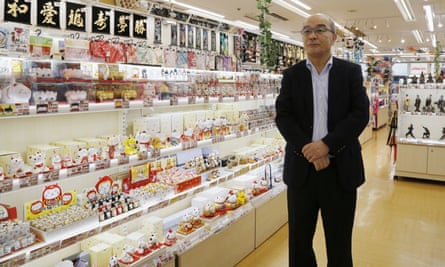
One force that may buoy the return of visitors is the drop of the yen: the yen has weakened sharply against the dollar, giving some visitors much heftier buying power and making Japan attractive to bargain hunters targeting Japan’s electronics, luxury goods and retail districts.
In Tokyo’s Akihabara electronics district, Hideyuki Abe’s shelves filled with watches and souvenirs like samurai swords and toy cats with bobbing heads. Abe employs about 50 people and had resorted to layoffs after the pandemic struck in 2020. Some Akihabara shops have closed down since then, but he bided his time.
“Hanging on is where power lies,” Abe said. “Now, I am a bit worried about a shortage of workers.”
With pandemic restrictions waning and the dollar at a three-decade high of about 145 yen, he believes the tourists will be back.
“This time,” he says, “it’s a perfect opportunity.”
Reuters and Associated Press contributed to this report
- Coronavirus
- Asia Pacific
Most viewed
Travelling To Japan In 2022: Visa Procedures, Apps To Download & What To Expect After You Land
Travelling to Japan in 2022
Months after Japan first began to welcome travellers, the country is finally further easing its border control. With effect from 7th September , Japan will be doing away with several strict regulations that discouraged international visitors from entering the country.
However, before you hop on the next plane to Japan, note that there are limitations that come with the good news. Whether you’re poised to make the big move as a student or are simply looking to make a long-awaited trip to the country , read on for our ultimate guide on travelling to Japan in the 2022 pandemic era.
For more guides, check out:
- How to rent an apartment in Japan
- Anime speech habits to avoid using in real life
- Shopping etiquette to look out for
For tourists
1. non-guided packaged tours now allowed.
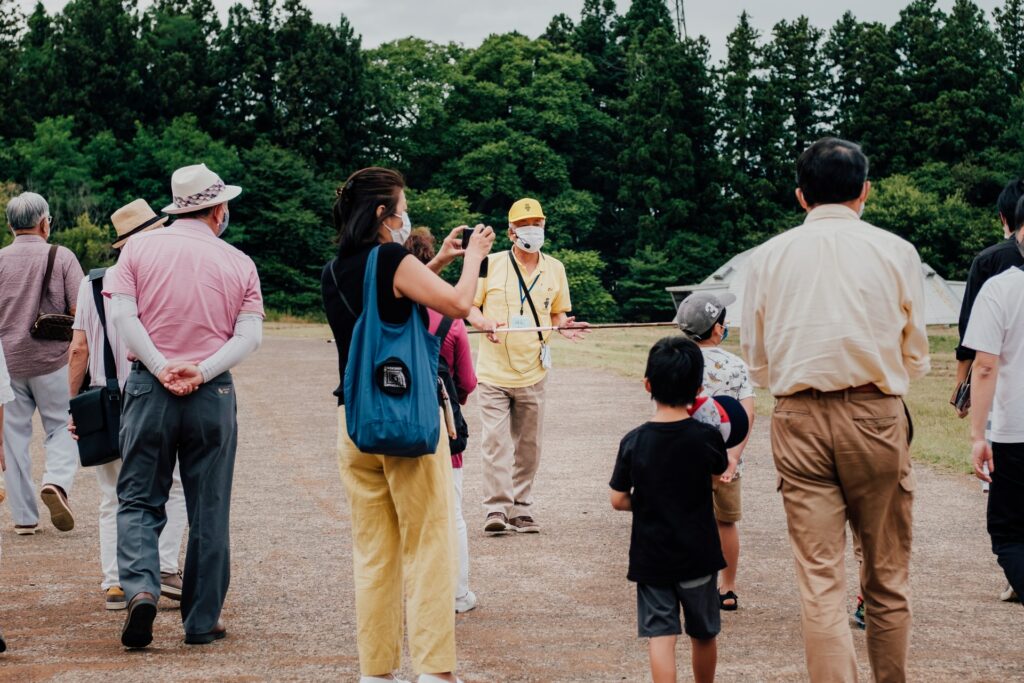
Previously, in order to enter Japan, international travellers had to be part of a pre-booked and guided tour led by a tour conductor. On 31st August, Prime Minister Kishida Fumio announced that with effect from 7th September, non-guided packaged tours will be allowed.
In other words, travellers will still have to book travel packages from authorised tour agencies, and adhere to the planned itinerary. This means that solo or free-and-easy travel is still not allowed, though visitors will no longer be tagged by a tour guide.
The daily cap of new entrants is also slated to be raised from 20,000 to 50,000 – more than double the current limit.
2. Pre-flight negative PCR test no longer required
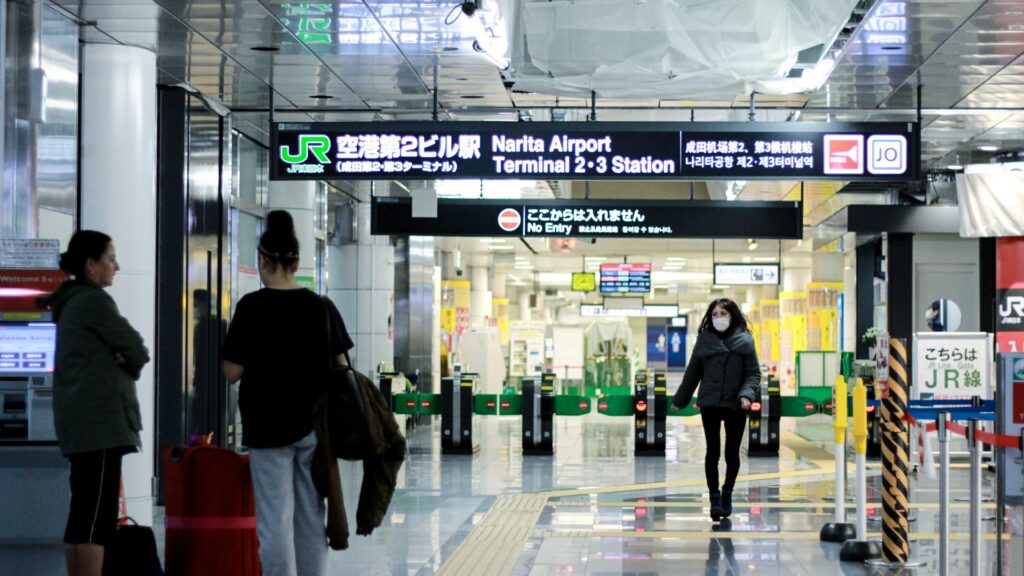
Previously, de pending on the country you’re from, you may or may not have been subject to quarantine. According to the Ministry of Foreign Affairs , countries or regions are classified as red, yellow, or blue. Passengers from the red group are required to do a pre-flight and post-arrival PCR test, on top of a 3-day quarantine as a designated facility.
However, from 7th September, individuals vaccinated with 3 doses of the approved vaccine, including a booster shot, will no longer need to test negative on a PCR test 72 hours prior to their flight.
3. International flights at Naha and New Chitose Airport to resume
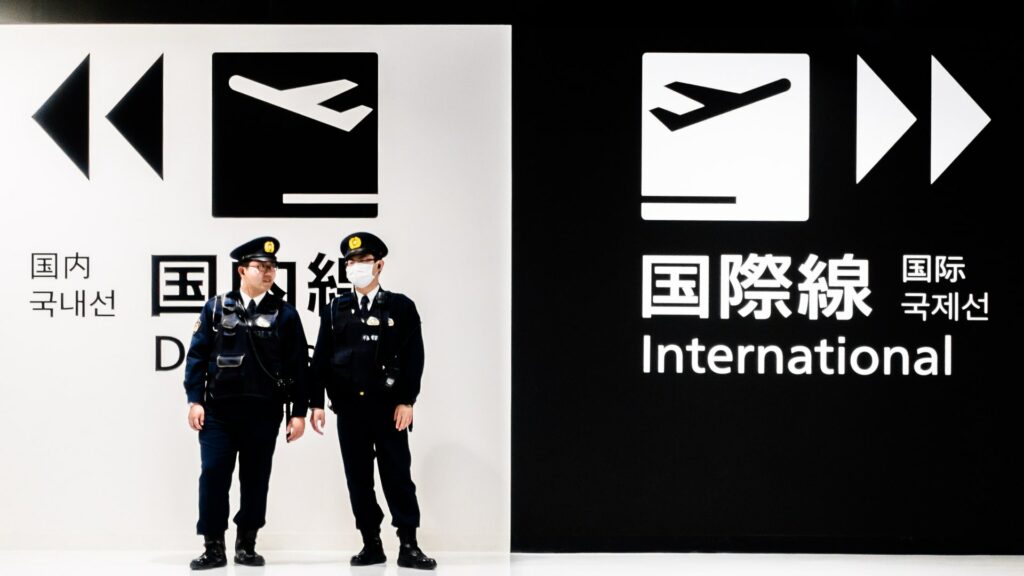
Besides the above, international flights are also slated to be resumed at Naha Airport and New Chitose Airport, gateways to Okinawa and Hokkaido respectively.
Currently, international flights can only land in 5 major airports, which includes Tokyo’s Haneda and Narita Airport, as well as Osaka’s Kansai Airport.
4. Travellers must be sponsored by Japanese travel agencies
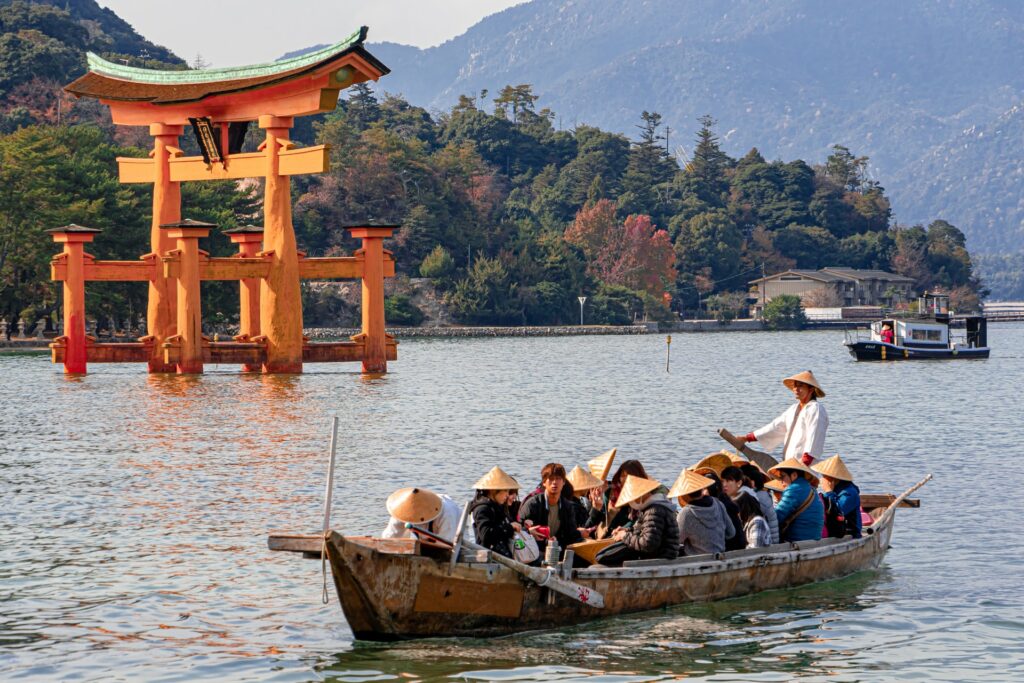
Once the packaged tours are open for booking, travellers will have to be sponsored by Japanese travel agencies or similar organisations. In other words, the agencies will act as your sponsor and are responsible for your being in the country .
According to the Ministry of Health, Labour and Welfare , the travel agencies undertaking the guided tour will have to register for the Entrants, Returnees Follow-up System (ERFS) on behalf of the participants.
Once successfully registered, a certificate will be sent to sponsors, and the certificate can be submitted to the relevant embassy for visa application, if there is a need for one.
For international students and business travellers
Applying for your visa, 1. getting a certificate of eligibility (coe).
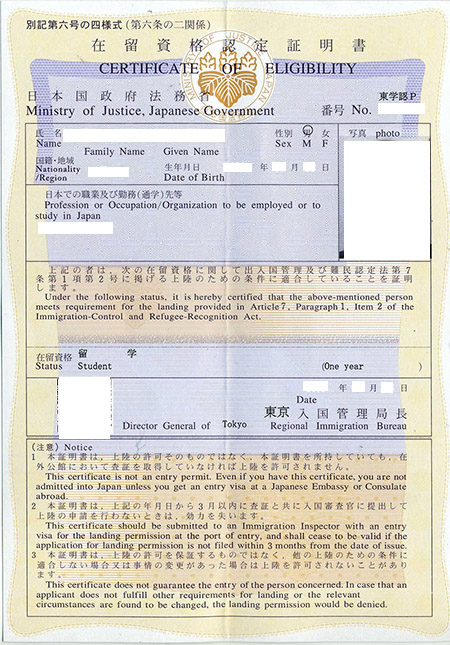
A Certificate of Eligibility , or COE for short, is your first step to entering the country. In a nutshell, it’s a document provided by the Regional Immigration Bureau , which certifies that the applicant has met all the requirements needed to reside in the country.
All paperwork and application procedures should be handled by your sponsor, which can be your employer, school, or relative. An important point to note is that your COE is not a replacement for a visa , but a required document that should be submitted to your local Japanese embassy during your visa application.
2. Registering for the Entrants, Returnees Follow-up System (ERFS)
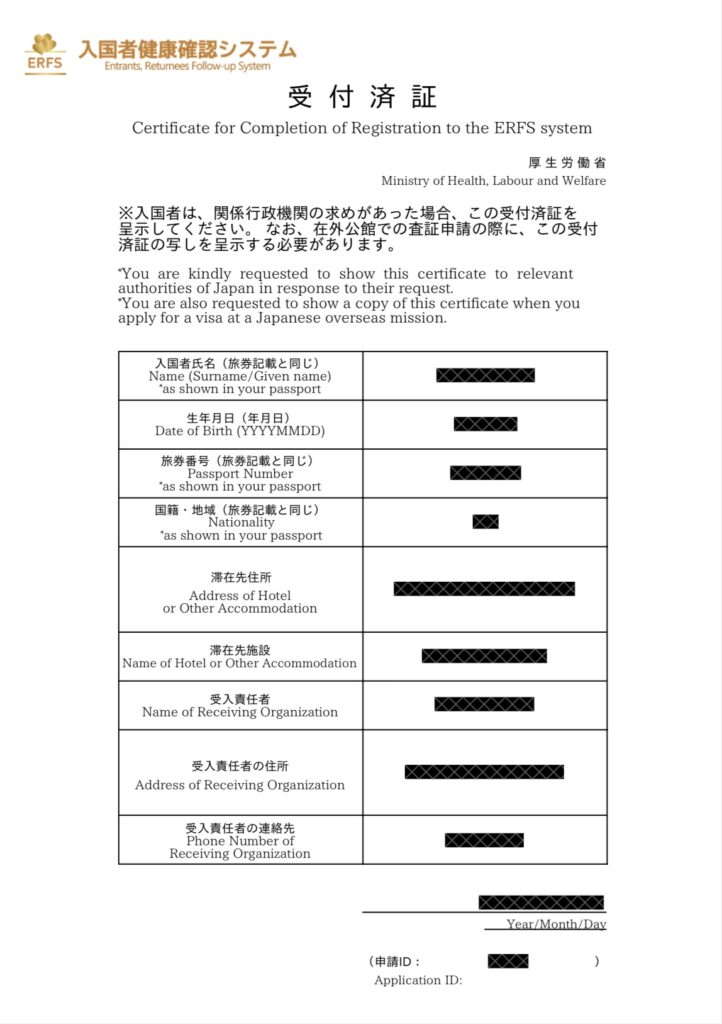
With effect from 1st March 2022, restrictions on new foreign entries have been revised. The new border measures now require an additional document on top of the COE – a certificate for completion of registration to the Entrants, Returnees Follow-up System (ERFS).
Like the COE, sponsors will be required to register the entrants’ information online . Once successfully registered, the certificate will be sent to sponsors , and foreign applicants can proceed to submit the certificate for visa processing.
3. Visa application
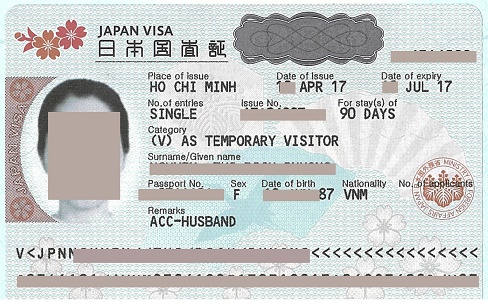
After gathering all the necessary certificates from your sponsor, it’s time to head to your local Japanese embassy. The list of required documents depends on factors such as your nationality, purpose of travel, and type of visa.
But in general, bring along your passport, a completed application form , photograph in the specified dimensions, your COE, and your ERFS registration certificate . Due to the pandemic, your local embassy may require visitors to book an appointment in advance, so call ahead before going.
Once the application is submitted, it should take a few business days . A gain, the duration varies , and you may return to pick up your visa once it’s issued.
4. Enter Japan before your COE expires
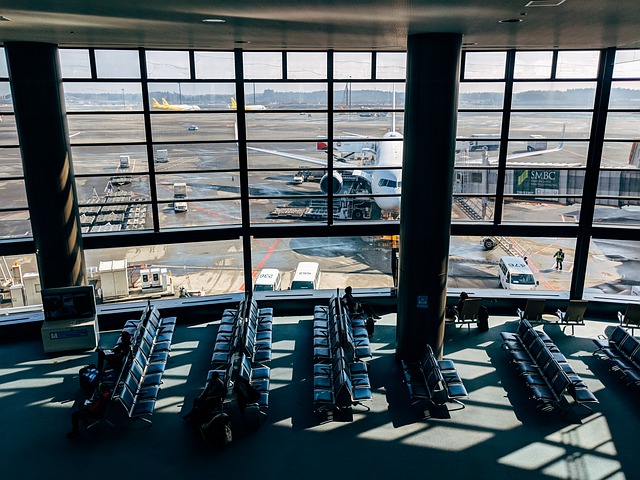
In principle, a COE is only valid within 90 days of its issue . Applicants have to enter Japan before the deadline, otherwise it becomes invalid.
But due to the ever-changing border restrictions, Japan has extended the validity period. For COEs issued between 1st January 2020 to 31st January 2022 , they expire on 31st July 2022 . T hose issued from 1st February 2022 to 31st July 2022 are valid for six months .
Other preflight procedures
1. getting a yunyu kakunin-sho for your medication.

Formerly known as Yakkan Shōmei (薬監証明), a Yunyu Kakuninsho (輸入確認証) is a permit for medicine importation. Travellers can only bring along more than one month’s supply of prescription medications, pharmaceuticals, and medical devices , if they’ve obtained a certified yunyu kakuninsho beforehand .
In the application document , detail the prescription item and quantity , then attach a doctor’s note and your flight itinerary . Email the PDF file to the relevant authorities of the airport at which you will be landing. Depending on the volume of applications that are being processed, it can take up to a few business days, so make sure to factor in enough time before your flight.
After you receive a certified permit, bring along a hard copy of it and declare your medication during customs clearance.
2. Download and register on the MySOS app
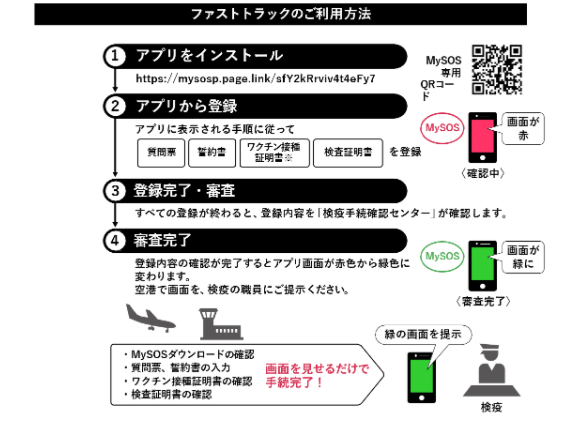
In order to expedite arrival procedures, the Fast Track was implemented at major airports such as Kansai International Airport and Narita International Airport. New foreign entrants can complete parts of the immigration procedure in advance by installing the MySOS app.
To register the necessary documents, you must first fill out the questionnaire and written pledge. The app will then prompt you to submit your vaccination certificate and a negative test result for COVID-19.
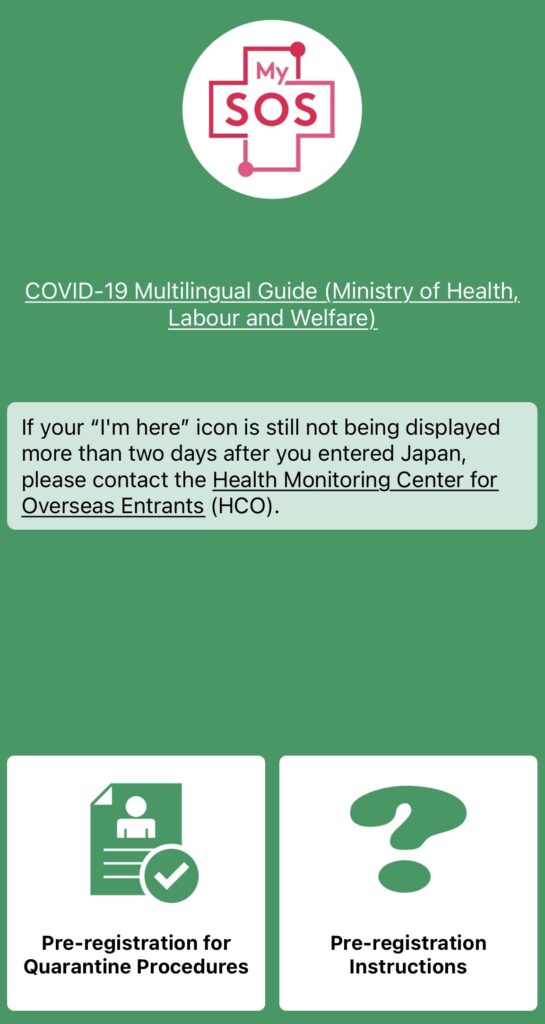
T he screen will remain yellow while your documents are being reviewed. After they are verified and good to do, your screen should turn green , and you can flash the page upon arrival in Japan.
The whole process is relatively smooth, with each step of verification taking only around 20 minutes. That said, the preflight Fast Track application has to be completed at least 16 hours in advance before your arrival.
3. Prepare your vaccination certificate

Like many countries, Japan requires travellers to be vaccinated. Prepare a valid vaccination certificate that’s issued by the government in your country. The document should detail your name, passport number, manufacturer of vaccines, vaccination dates, and at least two doses of approved vaccinations.
Before you get on the plane, the airline will do a quick scan before allowing you onto the plane, so bring along a hardcopy of the certificate.
4. Prepare a copy of your Written Pledge
In compliance with border measures, new entrants are to submit a signed copy of the Written Pledge . The two-page document outlines measures you will be required to observe , which includes providing updates on your location, complying with requests from relevant officials, staying at home, and more.
Those refusing to sign will be assigned to a quarantine location to self-isolate, and any violation of the clauses may result in deportation.
Upon arrival, submit the signed copy of your pledge to the airport quarantine station when prompted.
5. Money matters
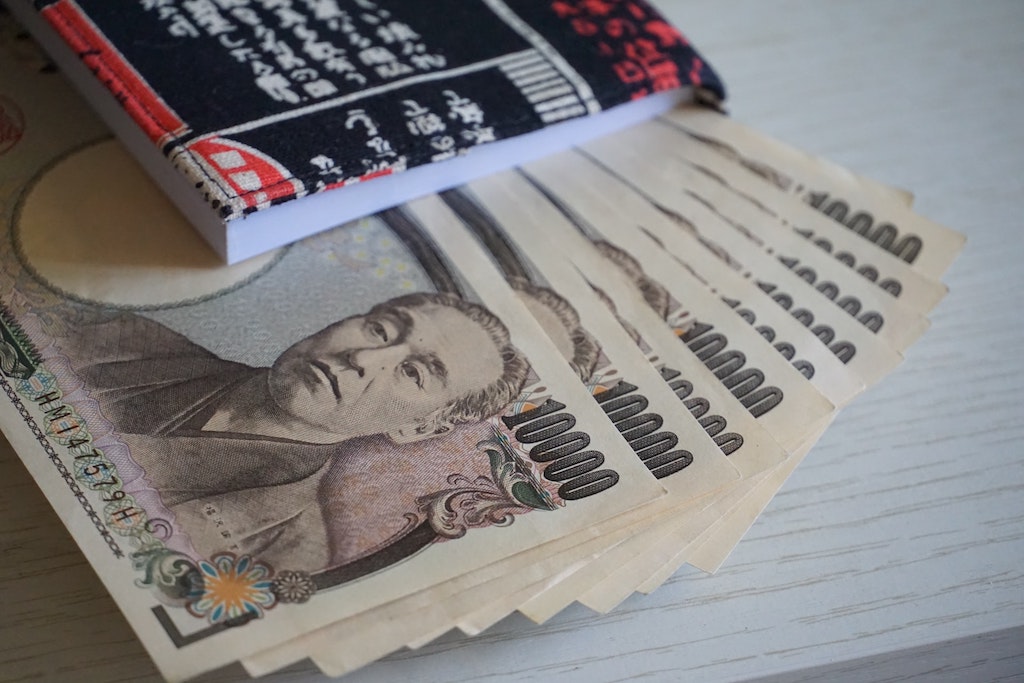
With the sharp fall in the value of Japanese yen recently, we recommend changing just a minimal amount of the local currency in advance.
Multi-currency digital wallets such as YouTrip and Revolut allow you to make in-app currency exchange s without having to worry about lugging a huge amount of cash around. While smaller mom-and-pop shops m ay not take cashless payments, the cards can be used at most convenience stores, chain shopping malls, and supermarkets.
What to expect after landing
1. be prepared to show your mysos app.
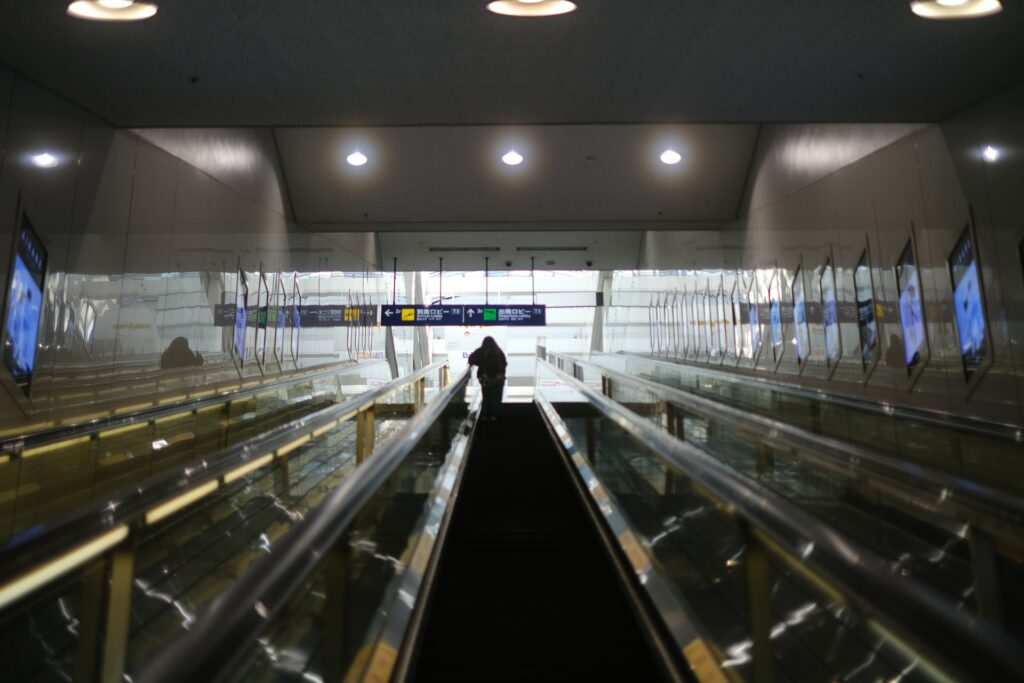
Once you touch down, you’ll be guided through rounds of checks, going from station to station. Get the green screen on your MySOS app ready as it will be the first thing the q uarantine staff will check.
After they’ve verified your pre-registration, you’ll be handed a piece of document – they call it “Health Card” – attached to a small slip of yellow paper printed with a checklist.
2. Declaring your travel history
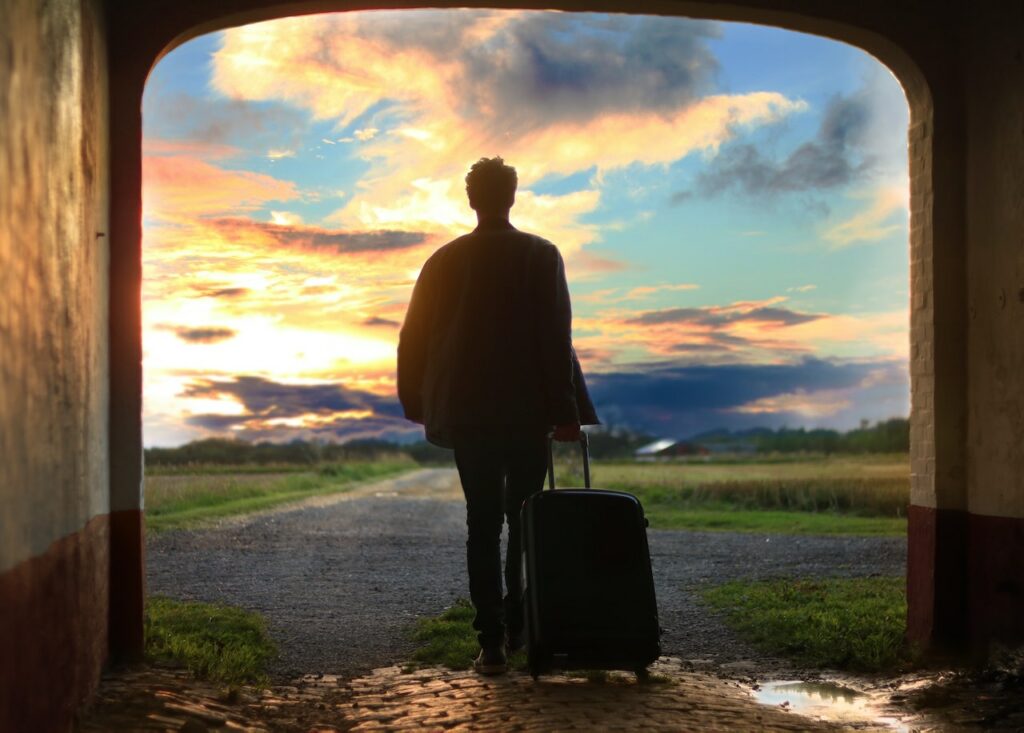
And so begins the process of getting in line and going through several stations. Besides collecting the questionnaire for COVID-19 related measures, which should be given to you on the plane to fill out, the staff will also ask about your travel history and a series of other questions. Be clear about where you’ve been in the preceding 14 days before entry.
3. Collecting saliva sample s for the COVID-19 test

Next, to conduct a PCR test, new arrivals will be given an empty plastic tube that’s labelled with a number, as well as a funnel. Proceed to the booths and spit several times into the tube to ensure that enough sa liva is collected.
If you’re having some trouble, look at pictures of lemons within the space as it’ll help stimulate saliva production. To make sure that your saliva sample is clear and free from food residue, refrain from eating or drinking – not even water – 30 minutes before landing .
4. Having your application settings checked
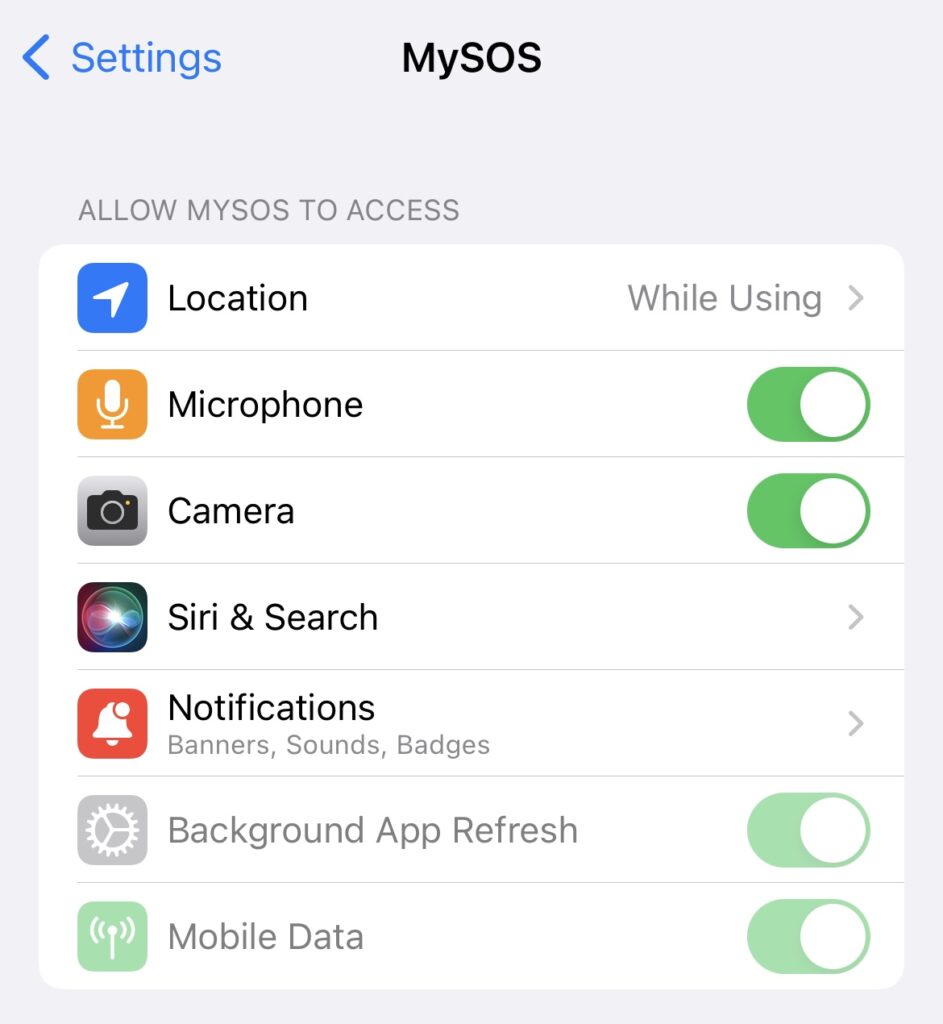
Once the spit tests have been done and dusted, and you’ve passed your saliva sample to the personnel, you’re just a few steps away from officially s etting foot in Japan.
The next procedure is a short one – you ’ll be guided by a staff member to ensure that your location and notification settings for the MySOS app are switched on .
5. Waiting for the test results
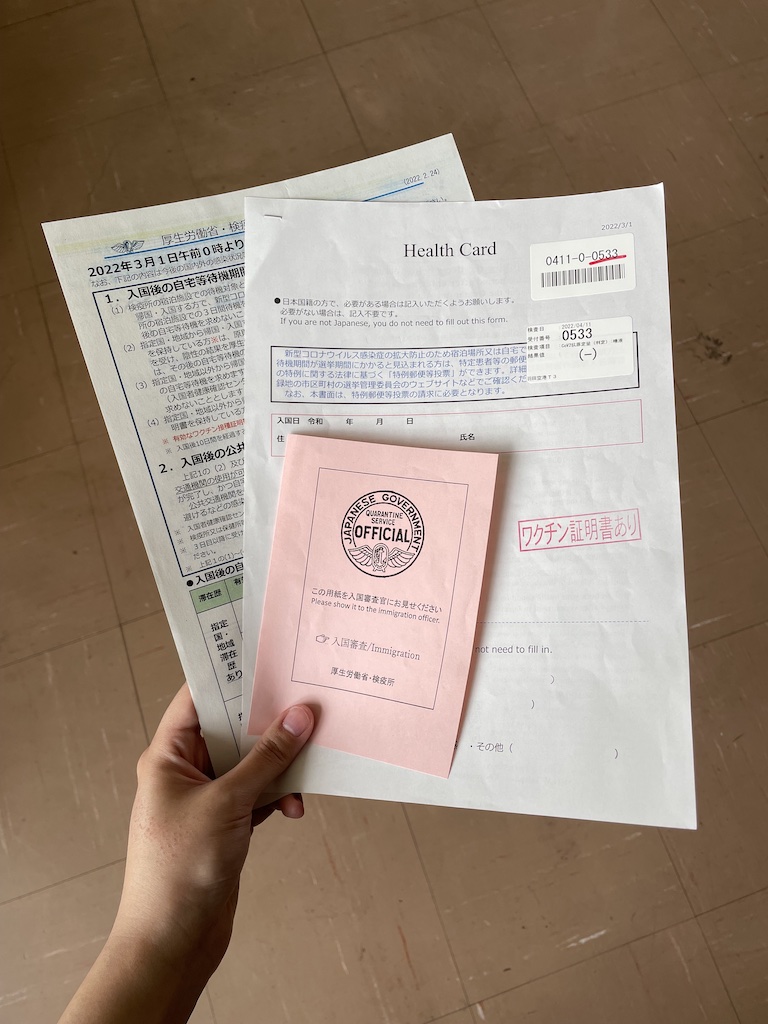
After walking back and forth within the airport, all you’ve got to do now is wait for your test results in the waiting area. Remember the saliva sample tube that was labelled with a number? When the results are out, your assigned number will be displayed on numerous monitors in the area.
Head over to the counter – the staff will hand you a pink slip of paper if you’ve tested negative and are good to go . The whole process can take at least one to two hours, but that’s a rough estimate as waiting time varies depending on the crowd size.
6. Going through immigration and getting your zairyū card
We never thought this day would come after two years of border closures, but here we are, just one stamp on our passport away from the land of next-level convenience stores .
From here on out , it’s pretty much standard procedure. The custom official will scan your passport and look through the standard disembarkation card and customs form.
If there are no problems, you’ll be issued your zairyū card (在留カード; residence card) , an identity card that’s issued to foreign residents who plan to live in Japan for more than three months. With that done, you are now well on your way.
7. Factoring enough time for domestic transit
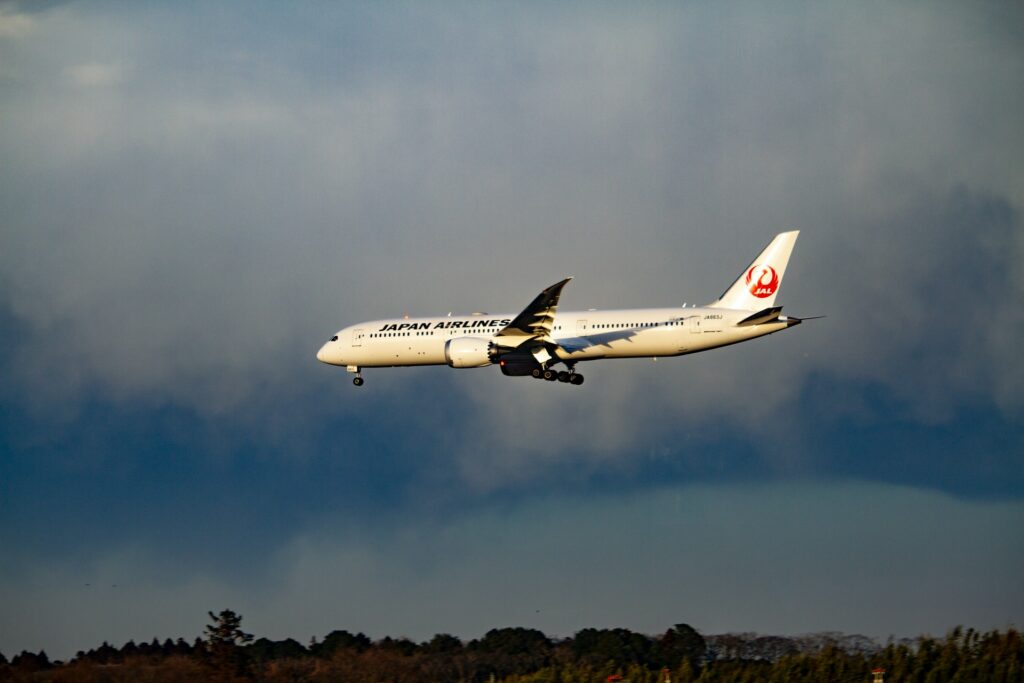
For travellers who are making a connecting flight in Japan, it’s imperative to factor in enough time to catch the domestic transfer. All international arrivals have to go through immigration procedures at the landing airport before you can pick up your luggage, get out of the international terminal, and commute to domestic terminals to catch your next flight.
To play it safe, make sure there’s at least four to six hours between your flights. Alternatively, if you’ve missed your flight, rescheduling to the next available one is also an option.
8. Transportation

Under renewed border regulations, travellers who are fully vaccinated (three doses) or entering Japan from a designated country are allowed to use public transport within 24 hours to commute from the airport to their accommodation after the COVID-19 test has been t aken.
That said , the government strongly urges all to take the shortest route possible and practice social distancing.
9. Wearing a mask
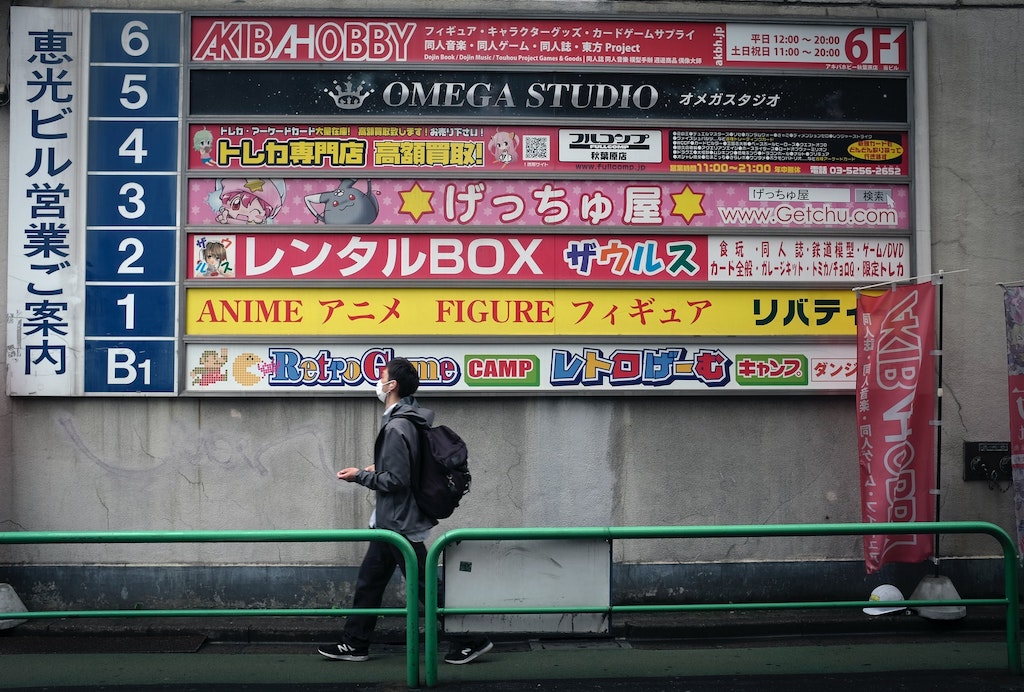
Even though mask mandates were never officially issued in Japan, you’d be hard-pressed to find a local who doesn’t have half their face covered. Wearing a mask is still a norm in the country , and with the number of COVID-19 cases rising recently, it’s better to be safe than sorry. Mask up, even if you’re in open spaces or outdoors.

10. Quarantine, if necessary
As determined by the Japanese government, citizens from countries that are deemed to have the Omicron variant under control can avoid self-quarantine. Depending on your vaccination status and departing country, the quarantine period can last from three to seven days . Arrival counts as day zero, which means quarantine will take place over the three subsequent days.
Even if you’ve managed to escape being cooped up in a room, do your due diligence and avoid the 3Cs – closed spaces, crowded places, and close-contact settings – for your first few days in the country.
On a side note, if you test positive at the airport, you will be asked to recuperate at a designated quarantine facility.
Guide to travelling to Japan in 2022
Judging by the trend so far, it looks like Japan is playing it safe and easing regulations in stages. Though self-guided tours are still banned for now, it is a positive sign that the country is gradually opening up to tourists and foreign arrivals.
This article will be updated periodically when there are new regulations , so keep your eyes peeled for the latest news on this space.
For more travel tips, check out:
- Strange laws in Japan
- Best art museums in Japan
- Guide to Japan shrines
- Travel tips for first-time travellers
- Ways to get around in Japan
This article was updated on 31st August 2022 by Xiu Ting Wong. Cover image adapted from (clockwise from top left): Volodymyr Hryshchenko , JC Gellidon , Kentaro Toma and Sho K

Get more stories like this.
Drop us your email so you won't miss the latest news.

Inside Kyoto
A Kyoto Travel Guide
Can I Travel To Japan Now? April 2024
Japan is finally open! Travelers from most countries can now enter Japan without applying for a visa in advance. Best of all, there are NO Covid protocols to enter Japan: You do NOT need proof of vaccination or a negative test to enter Japan.

Situation Summary
Last Update: December 4, 2023 (this page will be updated as needed)
- Japan is open! Visa-free, independent travel is now possible for most nationalities.
- There are NO Covid protocols for Japan. You do NOT need to be vaccinated against Covid to enter Japan. You do NOT need a negative Covid test to enter Japan.
- You can use the Visit Japan Web app to upload your immigration and customs details in advance. See our Guide to the Visit Japan Web app and Japan Entry Procedures for all the details. Note that the app is strongly recommended but not mandatory for entry to Japan. In fact, it’s probably quicker to not use the Visit Japan app on arrival.
- On March 13 2023, the indoor masking recommendation was dropped in Japan. You do not have to wear a mask in stores, restaurants, attractions, and on public transport. Some shops and restaurants may still ask that you mask, however. See our Japan mask page for details.
- Now is the time to start planning a trip to Japan. Contact Chris Rowthorn to start planning .
Commentary by Chris
Visa-free, independent travel restarted on October 11 2023. Citizens of 68 countries now get visa-free travel to Japan. Here’s the Japan Ministry of Foreign Affairs visa-free travel list . If you are a citizen of one of those countries, you do not need to apply for a visa in advance; you will be given a 90-day tourist visa upon arrival in Japan (note that there are few exceptions which are listed on the MOFA site).
Given that Japan is now open, it’s time to start planning a trip. If you want help planning a trip to Japan, visit my consulting page to book a Zoom consultation.
What You Need to Do Now
If you’re planning a trip to Japan, there are some things you should do now. There is a lot of pent up demand for travel to Japan, so plane tickets and accommodations should be a priority.
- Buy plane tickets: compare flight prices and times for the best deals.
- Book hotels and ryokans: check Booking.com and Agoda.com .
- View our Packing List for Japan to make sure you don’t forget to bring anything.
Consider Doing
- Book some walking tours .
- Travel insurance: World Nomads offers simple and flexible travel insurance. Buy at home or while traveling and claim online from anywhere in the world.
- Buy a Japan Rail Pass : Order one here .
- Buy a Icoca card : Get one here .
- Buy a SIM or pocket wifi : Order one here .
Check Hotel Availability
Destination, check-in date, check-out date.

Do You Need to Be Vaccinated to Enter Japan?
You do NOT need to be vaccinated with a Covid vaccine to enter Japan.
Do You Need a Covid Test to Enter Japan?
You do NOT need a negative Covid test to enter Japan.
Flights to Japan Currently Operating
Flights to Japan have mostly returned to pre-pandemic schedules and availability: compare flight prices and times for the best deals.

More Useful Information
- Best Hotels in Kyoto
- Best Hotels in Tokyo
- Japan Rail Pass Guide
Kyoto Vacation Checklist
- For all the essentials in a brief overview, see my First Time In Kyoto guide
- Check Kyoto accommodation availability on Booking.com and Agoda.com - often you can book with no upfront payment and free cancellation
- You can buy shinkansen (bullet train) tickets online from Klook - popular routes include Tokyo to Kyoto , Kyoto to Osaka and Kyoto to Tokyo
- Need tips on where to stay? See my one page guide Where To Stay In Kyoto
- See my comprehensive Packing List For Japan
- Buy a data-only SIM card online for collection when you arrive at Kansai International Airport (for Osaka and Kyoto) or Tokyo's Narita Airport . Or rent an unlimited data pocket wifi router
- Compare Japan flight prices and timings to find the best deals
- If you're making frequent train journeys during your visit, you might save money with Japan Rail Pass – see if it's worth it for you
- A prepaid Suica card makes travelling around Kyoto easy – here's how
- World Nomads offers simple and flexible travel insurance. Buy at home or while traveling and claim online from anywhere in the world
Kyoto District Map

- Central Kyoto
- Northwest Kyoto
- Northern Higashiyama
- Southern Higashiyama
- Downtown Kyoto
- Kyoto Station Area
- South East Kyoto
Disclosure: InsideKyoto.com is a participant in the Amazon Services LLC Associates Program, an affiliate advertising program designed to provide a means for sites to earn advertising fees by advertising and linking to amazon.com and amazon.co.uk. World Nomads provides travel insurance for travellers in over 100 countries. As an affiliate, we receive a fee when you get a quote from World Nomads using this link. We do not represent World Nomads. This is information only and not a recommendation to buy travel insurance.

Kyoto Wants You Back, but It Has Some Polite Suggestions
The city, one of Japan’s most-visited before the pandemic, desperately needs tourism’s money, but it would like to avoid the excesses of Instagram-driven itineraries.
Before the pandemic, Kyoto’s Kiyomizu Temple was as famous for its congestion as for its sublime architecture and spectacular view of the city below. Credit... Andrew Faulk for The New York Times
Supported by
- Share full article

By Ben Dooley and Hisako Ueno
- Published Sept. 25, 2022 Updated Sept. 28, 2022
In the months before March 2020, the food sellers in Kyoto’s Nishiki market often wished for an end to the seemingly endless stream of photo-hungry visitors from abroad who always seemed to be underfoot.
“We weren’t used to foreign tourists,” said Nobuyuki Hatsuda, who leads a business alliance promoting the shopping street in the city center, where vendors sell a dizzying array of traditional Japanese foods, carefully displayed and attractively packaged.
Nishiki has long been a working market, and the parade of visitors — rifling through the meticulously arranged merchandise, haggling with frazzled shopkeepers and blocking storefronts with their luggage — interfered with the flow of daily business, driving away locals who had long done their shopping on the street.
But then the pandemic hit. The tourists — along with their money — evaporated, and sellers had a change of heart, said Mr. Hatsuda, who sells kamaboko, a fish cake often formed into delicate pink and white loaves.
“We realized that we can’t choose our customers,” he said.
Other than China, Japan had maintained the strictest border controls of any major economy. Since the start of 2021, fewer than 800,000 foreign visitors have set foot in the country. As other countries began welcoming tourists back in numbers close to their prepandemic highs, Japan let only a trickle of travelers in. The country eased restrictions on trips for business and study in the spring, but as of September, it was still limiting tourism to travelers on package tours who were willing to negotiate a labyrinth of red tape.
That will soon change, however. Prime Minister Fumio Kishida said last week that the country would further ease border controls in October, eliminating a cap on daily entries and allowing tourists to travel independently. (Even after normal travel resumes, however, Chinese visitors, who accounted for more than 30 percent of inbound traffic in 2019, are unlikely to return in large numbers until Beijing relaxes its strict Covid Zero policy.)
As tourism slowly returns, Kyoto, like other famous tourist destinations worldwide, is grappling with how to accommodate the crowds without sacrificing quality of life for those who call the ancient capital home.
In the absence of a clear solution, Kyoto’s government is betting on a change of perspective: After years of promoting “omotenashi” — a Japanese word for meticulous hospitality — it’s trying to take more time for self-care.
“Kyoto isn’t a tourist city, it’s a city that values tourism,” Daisaku Kadokawa, the city’s mayor, said during a recent interview at its city hall, where he wore the formal kimono that has become a trademark during his almost 15 years in office.

Growing popularity
Kyoto is home to several globally known companies, like Nintendo and Kyocera, and has produced more Nobel Prize winners in the sciences than any other city in Japan. But in the years leading up to the pandemic, it had become dependent on the flood of tourists that bumped, clattered and pushed through its streets.
Kyoto had always been a popular destination for domestic travelers. Before Japan opened to the world in 1851, pilgrims trekked from around the country to visit its more than 2,000 temples and shrines. Spared from the ravages of World War II, it later became something close to a living museum, a popular destination for school trips and people hoping for a glimpse of the country’s history and tradition.
No one comes to Kyoto looking for a party. Visitors are seeking a particular vision of Japan, one that is found in the koi ponds of meticulously kept temple gardens; the smell of roasting brown tea, known as hojicha, that wafts from the door of ancient storefronts; and the clatter of a geisha’s wooden sandals down a cobbled alleyway.
In the years before the 2020 summer Olympics, however, the realities of the modern travel industry had begun to compromise the city’s anachronistic charms. Japan launched an all-out effort to promote inbound tourism, and Kyoto experienced a surge in popularity among foreign visitors.
Starting from a base of around 10 million in 2013, the number of foreign visitors had more than tripled by the pandemic’s start, according to government data . Nearly a third of them traveled to Kyoto, where the tourism industry employed one of every five workers. Taxes from the sector comprised nearly 13 percent of the city’s revenue.
But locals quickly became fed up with what they called “tourism pollution.” Suitcases jammed the aisles of city buses. Eager visitors harassed geisha’s apprentices, maiko, for photographs on their way to work. And lost tourists stumbled into people’s homes while searching for their Airbnb.
Social media, especially, shaped tourism in the city. And not for the better.
Masutami Kawaguchi, who offers private English tours of the city, said that — before the pandemic — his clients’ itineraries were almost entirely determined by Instagram. Tourism became laser-focused on the city’s famously picturesque areas, with people getting off the train at Kyoto Station and then rushing to the two or three best photo spots — the bamboo groves of Arashiyama, the orange gates winding up the mountain behind Fushimi Inari shrine and the golden pavilion at Kinkakuji temple — creating traffic jams and massive crowding in the surrounding areas.
Kyoto’s famously polite residents began to express their displeasure with uncharacteristic bluntness.
In Nishiki, signs popped up among the stalls admonishing tourists not to eat while walking, a pet peeve in Japan. Neighborhood shoppers, tired of the crowding and commotion, began going to supermarkets, and some long-established sellers closed.
Even Buddhist monks lost their cool.
In autumn and spring, when the streets became clogged with tourists gawping at pyrotechnic bursts of maple leaves and cherry blossoms, “people couldn’t even leave their houses. The city was barely livable,” said Kojo Nagasawa, the secretary general of the Kyoto Buddhist Federation, which includes three of the city’s most famous temples.
The group has long called for moderation in Kyoto’s economic development. In 1991, it took out a full-page ad in The Times opposing the construction of new, high-rise hotels, which it said would destroy the city’s unique character.
“Before we knew it, the economy was nothing but tourism,” Mr. Nagasawa said. “The city didn’t know when enough was enough.”
Looking to curb some of the worst problems, in 2018 the city cracked down on investors who were snatching up traditional houses in residential neighborhoods and converting them into Airbnb rentals.
The pandemic’s damage
In the spring of 2020, Japan slammed its borders shut. The fire hose of foreign money turned off, and Kyoto, which had long struggled with financial problems, found itself on the verge of bankruptcy.
The city got a taste of life without tourists, and the combination of the coronavirus and red ink was “a double punch,” Mr. Kadokawa, the mayor, said.
At the beginning of the pandemic, “people in the city were saying, ‘We’ve returned to the old Kyoto, isn’t that great?’” said Toshinori Tsuchihashi, the director of the city’s tourism department.
But, as the economic damage mounted, residents “have come to recognize tourism’s importance.”
Many businesses have yet to recover. Before the pandemic, it was nearly impossible to get a reservation at one of the many restaurants lining Pontocho, an atmospheric alleyway running parallel to the Kamo River in Kyoto’s city center. But on a recent weekend night, “for lease” signs hung in darkened shop windows, and many of the terraces looking out on the water sat unused.
Hotel The Mitsui Kyoto , a luxury Western-style hotel, opened in late 2020 and has operated well below capacity for most of the pandemic, according to Manabu Kusui, the general manager.
As tourists begin returning to Kyoto, the hotel hopes to differentiate itself by providing guests with exclusive experiences it has negotiated with some of Kyoto’s beautiful but less trafficked destinations. One of the first is a private tour of Nijo Castle, the residence of Japan’s first shogun of the Edo period, Tokugawa Ieyasu, conveniently located next to the hotel.
It’s a style of tourism the city is trying to promote as part of its new strategic plan to address prepandemic crowding.
But Mr. Kusui knows that people come to Kyoto with a certain itinerary in mind, and “we can’t tell them not to go to some place like Kiyomizu Temple,” he said, referring to the famous Buddhist temple perched on a mountain face on Kyoto’s east side.
Some polite suggestions
With no legal options for instituting hard limits on visitors, the government hopes to dilute traffic so it is less concentrated in the same times and places. Planners are also discussing how to fix problems, like crowded city buses, that aggravate residents. So far, however, the initiatives mostly consist of soft measures like trying to educate visitors in Kyoto’s traditional “morals” and hoping for the best.
In that spirit, Nishiki market has decided it will try to encourage tourists instead of admonishing them, exchanging its list of “don’ts” for a list of “pleases.” Visitors who scan a large QR code at the entrance are presented with a list of suggestions for enjoying the market and rewarded with free Wi-Fi for reading it.
At the same time, many in the city are trying to improve the experience for tourists and residents alike by reimagining Kyoto’s overall approach to the industry.
Kiyomizu Temple is among the institutions that have taken up the gauntlet, trying to promote a new kind of tourism that encourages tourists to think of the city as a place to live, not a theme park.
Before the pandemic, the temple was as famous for its congestion as for its sublime architecture and its spectacular view of the city below. In high season, pushing through the crowds clogging the temple’s graceful walkways had become an enervating and dispiriting ordeal that few locals would willingly undergo.
When Covid hit, the temple's abbot, Seigen Mori, was already experimenting with ways to allow visitors to experience it as it was intended — as a tranquil place of worship — but with limited success.
The last two and a half years, however, have given him an opportunity to “press reset,” he said, and explore different ways of interacting with visitors. In recent months he has begun opening the temple at night to small groups, taking the time to personally lead them in prayer and conversation.
Seeing the temple at night fundamentally transforms visitors’ relationship with the space, he believes, as the disorienting press of the usual crowds is replaced with the chirr of cicadas, the rich aroma of incense and the soft flicker of shadows on ancient statuary.
Mr. Mori is eager to welcome guests from abroad, he said, as long as they understand that the experience is focused on contemplation.
Kyoto is anticipating the inevitable return of those guests with a mix of longing and apprehension, said Takeshi Otsuki, a general manager at Japanese travel giant JTB.
“We’re hoping the number of visitors increases gradually, and we have a soft landing,” Mr. Otsuki said.
Some in the city are eager to greet the new tourists.
Fuminari Shinbo is part of a group of retirees who began training ahead of the Tokyo Olympics to give English tours to visitors coming to Kyoto, devoting hours to memorizing English dialogues they never had the chance to use.
In late August, about 20 of the volunteers eagerly gathered in front of Fushimi Inari, a shrine that has become Kyoto’s most popular tourist destination, for a dry run.
Clothed in bright blue bibs with white lettering advertising free help for English-speaking tourists, they introduced the shrine’s most famous feature, a corridor of nearly a thousand bright orange gates that have provided a vibrant punch of color to countless vacation photos.
When the tour was over, Mr. Shinbo said he was excited that he would finally be able to put his hard work to good use.
So far, he said, “I’ve only been able to practice on my grandson.”

52 Places for a Changed World
The 2022 list highlights places around the globe where travelers can be part of the solution.
Follow New York Times Travel on Instagram , Twitter and Facebook . And sign up for our weekly Travel Dispatch newsletter to receive expert tips on traveling smarter and inspiration for your next vacation. Dreaming up a future getaway or just armchair traveling? Check out our 52 Places for a Changed World for 2022.
An earlier version of this article misidentified Tokugawa Ieyasu. He was the first shogun of the Edo period. He was not the first shogun of Japan. The error was repeated in a photo caption.
An earlier version of this article spelled the name of a tourist site popular on Instagram incorrectly. It is the golden pavilion at Kinkakuji temple, not at Kinkauji temple.
How we handle corrections
Ben Dooley reports on Japan’s business and economy, with a special interest in social issues and the intersections between business and politics. More about Ben Dooley
Hisako Ueno has been reporting on Japanese politics, business, gender, labor and culture for The Times since 2012. She previously worked for the Tokyo bureau of The Los Angeles Times from 1999 to 2009. More about Hisako Ueno
Advertisement
- Travel Trade
- Meetings & Events
- Netherlands
- Select Language 简体中文 繁體中文(香港) 繁體中文(臺灣) India (English) Bahasa Indonesia 한국어 ภาษาไทย Tiếng Việt Singapore (English) Philippines (English) Malaysia (English) Australia/New Zealand (English) Français Deutsch Italiano Español United Kingdom (English) Nordic countries(English) Canada (English) Canada (Français) United States (English) Mexico (español) Português العربية Japan(日本語) Global (English)
- India (English)
- Bahasa Indonesia
- Singapore (English)
- Philippines (English)
- Malaysia (English)
- Australia/New Zealand (English)
- United Kingdom (English)
- Nordic countries(English)
- Canada (English)
- Canada (Français)
- United States (English)
- Mexico (español)
- Global (English)
- Fujiyoshida
- Shimonoseki
- Ishigaki Island
- Miyako Island
- Kerama Island
- Tokyo Island
- Koka & Shigaraki
- Hida Takayama
- Ginza, Nihonbashi
- Beppu & Yufuin (Onsen)
- Ginzan Onsen
- Nagasaki Islands

- Kumano Kodo
- Shikoku Karst
- Amami Oshima
- Hachimantai
- Omihachiman
- Aizuwakamatsu

- Diving in Japan
- Skiing in Japan
- Seasonal Flowers in Japan
- Sustainable Outdoors
- Off the Beaten Track in Japan
- Scenic Spots
- World Heritage
- Home Stays & Farm Stays

- Japanese Gardens
- Japanese Crafts
- Temple Stays
- Heritage Stays
- Festivals and Events
- Theater in Japan
- Japanese Tea Ceremony
- Cultural Experiences in Japan
- Culture in Japan

- Local Cuisine Eastern Japan
- Local Cuisine Western Japan
- Local Street Food
- Japan's Local Ekiben
- Japanese Whisky
- Vegetarian and Vegan Guide
- Sushi in Japan Guide
- Japanese Sake Breweries

- Art Museums
- Architecture
- Performing Arts
- Art Festivals
- Japanese Anime and Comics
- Japanese Ceramics
- Local Crafts

- Scenic Night Views
- Natural Wonders
- Theme Parks
- Samurai & Ninja
- Iconic Architecture

- Wellness Travel in Japan
- Japanese Ryokan Guide
- A Guide to Stargazing in Japan
- Relaxation in Japan
- Forest Bathing (Shinrin-yoku)

- Experiences in Japan
- Enjoy my Japan
- National Parks
- Japan's Local Treasures
- Japan Heritage
- Snow Like No Other
- Wonder Around Japan

- Visa Information
- Getting to Japan
- Airport Access
- COVID-19: Practical Information for Traveling to Japan
- Anime Tourism
- Countryside Stays
- Accessible Tourism
- Hokkaido Great Outdoors
- Scenic World Heritage in Tohoku
- Shikoku’s Nature and Traditions
- Southern Kyushu by Rail
- Tour Operator Search

- Traveling by Rail
- How to Travel by Train and Bus
- JR Rail Passes
- Scenic Railways
- Renting a Car
- Sustainable Travel in Japan
- Travel Brochures
- Useful Apps
- Online Reservation Sites
- Eco-friendly Accommodation
- Luxury Accommodations
- Traveling With a Disability
- Hands-free Travel
- How to Book a Certified Tour Guide
- Volunteer Guides
- Tourist Information Center

- Japanese Manners
- Spring in Japan
- Summer in Japan
- Autumn in Japan
- Winter in Japan
- Cherry Blossom Forecast
- Autumn Leaves Forecast

- Japan Visitor Hotline
- Travel Insurance in Japan
- Japan Safe Travel Information
- Accessibility in Japan
- Vegetarian Guide
- Muslim Travelers
- Safety Tips

- Browse All Inspiration
- Japan Fan Newsletter
- Food & Drink
- Life in Japan
- Japan in the UK/IRE

My Favorites
${v.desc | trunc(25)}
Planning a Trip to Japan?
Share your travel photos with us by hashtagging your images with #visitjapanjp
Create your own moments
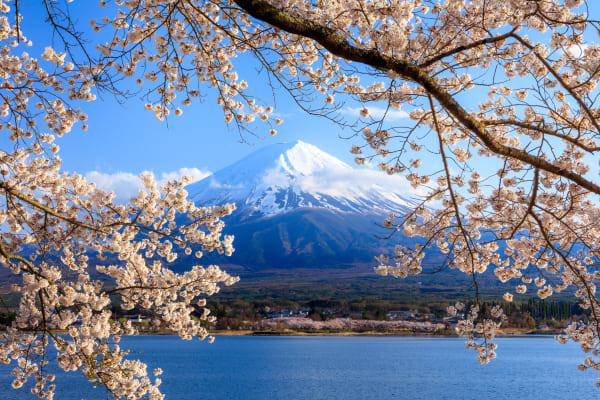
Please Choose Your Language
Browse the JNTO site in one of multiple languages

Japan-bound Statistics
Time series data-set related to Overseas Residents’ Visit to Japan can be downloaded.
Overseas Residents' Visits to Japan 08 March 2024
- According to JNTO, the estimated number of international travelers to Japan in January 2024 was 2,688,100 (at the same level as in 2019).
Overseas Residents' Visits to Japan (Estimated figures)
2,688,100 Visits
YOY +79.5%
January to January
1.1 Overseas Residents' Visits to Japan by month
Source : Japan National Tourism Organization (JNTO)
1.2 Overseas Residents' Visits to Japan by year Annual
Overseas residents' visits to japan by country and region 11 march 2024.
- Looking at the number of international travelers to Japan by country/region in January 2024, Korea had the highest number of foreign visitors at 857,000, followed by Taiwan at 492,300, and China at 415,900.
1.3 Overseas Residents' Visits to Japan by Country and Region
Source : Japan National Tourism Organization (JNTO) Figures until November 2023 are provisional. Figures up to December 2023 are estimate.
1.4 Overseas Residents' Visits to Japan by country or region, 2022 Annual
Source : Japan National Tourism Organization (JNTO) *Provisional
1.5 Overseas Residents' Visits to Japan by Region Annual
Source : Japan National Tourism Organization (JNTO) Figures until 2021 are final. Figures in 2022 are provisional.
Download time series dataset .xlsx
Statistics of Overseas Residents' Visits to Japan (Historical figures/by Country/by purpose)
EXCEL formatted file/ 806kB Modified: 05 March 2024
The Ministry of Foreign Affairs website uses JavaScript. Please turn on "JavaScript" and use it.

With regards to visa inquiries, you can contact “Foreign Residents Support Center (FRESC) MOFA Visa Information” or “the Japan Visa Information Hotline” listed on the website of the Embassy or Consulate General of Japan. Due to the complex nature of visa requirements, we are UNABLE to respond to visa-related inquiries made through this website at the moment. We advise you to contact the Consular Section of the Embassy or Consulate General of Japan nearest you for more information and advice.
If you are a foreign national, please click the links below for specific information related to respective subjects.
1. Visa Application Procedures
2. about visa.
- 3. Visa Application Documents
4. Frequently Asked Questions
5. announcements.
- 6. Inquiries Concerning Visas
- Be aware of fraudulent website, social media, emails in an attempt to extract payments from visa applicants (July 5, 2017)
Short-Term Stay
(A stay of up to 90 days for tourism, business, visiting friends or relatives, etc. that does not include remunerative activities)
Click on the nationality of the visa applicant traveling to Japan.

Visa exemption arrangements have been resumed from 0:00 am (JST) on October 11, 2022.
It is highly recommended to purchase international travel medical insurance for your trip to Japan. Overseas travel medical insurance helps you in case of emergency.
Work or Long-Term Stay
(A stay during which the applicant performs remunerative work in Japan or a stay of over 90 days in Japan, etc.)
- Procedures chart for long-term stays
- The Working Holiday Programmes in Japan
- Japan’s Pre-Entry Tuberculosis Screening
Visa for Medical Stay
Visa exemptions for diplomatic and official passport holders.
- Points to Note and Application Procedures
- Visa Processing Time
- Validity of a Visa
- Criteria of Visa Issuance
- Visas and Landing Permission
3. Visa Application Documents (download)
- (Note1) Refer to [1. Visa Application Procedures] for details of documents required.
- (Note3) Visa application forms that are not in the QR code (PDF) format cannot be saved. Please print a paper copy of the Visa application.
- Visa application form
- Tell me why you rejected my visa application.
- I want to go to Japan. Do I need a visa?
- I want to invite a foreign national to Japan. What procedures are necessary?
- What should I do to get a Certificate of Eligibility?
- The Certificate of Eligibility will not arrive by the time I apply for a visa. Can I still apply for a visa with its copy?
- As a “guarantor”, to what extent do I need to be responsible?
Newly introduced visas
- Special highly skilled professional (J-Skip)
- Designated activities (Future creation individual, Spouse or Child of future creation individual) (J-Find)
- Designated activities (Digital Nomad, Spouse or Child of Digital Nomad)
Review on restrictions on new entry of foreign nationals into Japan
- Application for Visa for foreign nationals eligible for Phased Measures toward Resuming Cross-Border Travel
- Border measures to prevent the spread of novel coronavirus (COVID-19)
Statistics for the Number of Visas
- Number of Visas Issued in 2021(May 31,2022)
Relaxation of Visa Requirements
- Visa Waiver Measure for Nationals of the Federative Republic of Brazil in Possession of Ordinary Passports(September 30, 2023)
- Signing of the Japan-Israel Working Holiday Agreement (April 28, 2023)
- Visa Waiver Measure for Nationals of the State of Qatar based on Ordinary Passport Registration System (April 2, 2023)
- Visa Waiver Measure for Nationals of the United Arab Emirates in Possession of Ordinary Passports (November 1, 2022)
- Japan’s Pre-Entry Tuberculosis Screening (April 3, 2020)
- Japan's Visa Policy in Accordance with Measures to Combat Trafficking in Persons (February 2009)
6. Inquiries about Visas Application
Foreign Residents Support Center (FRESC) MOFA Visa Information
Yotsuya Tower 13F, 1-6-1 Yotsuya, Shinjuku-ku, Tokyo, 160-0004 Navi-Dial: 0570-011000 (For some IP phones and calls from overseas, please call +81-3-5369-6577) Monday to Friday, 09:00-17:00
Related Links
- Websites of Japanese Embassies, Consulates and Permanent Missions

Japan is swamped with tourists. Now visitors are going off the beaten track
Tour operators are touting Japan’s less explored regions as surging visitor numbers put strain on popular sites.

Tokyo, Japan – When Paul Christie started conducting tours on Japan’s Nakasendo, an old trade route along the post towns of Nagano Prefecture’s Kiso Valley, few travellers frequented the trail.
Christie, who has lived on and off in Japan since the late 1980s, viewed the route as a great opportunity for tourists to see a more authentic side of Japan, allowing them to explore the country’s history, nature and geography on foot.
Keep reading
India hosts g20 tourism meet in kashmir under heavy security, saudi arabia eyes aviation expansion to get in on crucial tourism market, are the risks involved in sea and space tourism too high, ‘without rules we cannot live’: greece seeks ways to tackle ‘overtourism’.
Since taking over as CEO of tour operator Walk Japan in 2002, Christie has been on a mission to spread tourists more evenly across the archipelago.
“We’ve been doing this for 20 years and we tend to go to places that are not touristy, so we’re teasing out the interesting parts of Japan,” the United Kingdom native told Al Jazeera.
“This addresses the problems Japan is experiencing with ‘overtourism’.”

“Overtourism” was a common talking point in Japan’s tourism industry before the COVID-19 pandemic.
After eight consecutive years of inbound growth, Japan received a record 32 million visitors in 2019.
But the rising tide did not raise all boats. Most travellers flocked to the Golden Route, running from Tokyo through the Osaka-Kyoto-Kobe conurbation, putting historical districts, Shinto shrines, Buddhist temples and popular museums under strain.
Since Japan lifted its pandemic-era border restrictions in October last year, concerns about unsustainable tourism have returned.
Visitors have rushed back in droves: 2.3 million foreign tourists arrived in July, the highest figure for any month since 2019.
China’s decision last month to lift its three-year ban on group tours to Japan is expected to result in a further spike in arrivals.
In 2019, 9.2 million Chinese tourists travelled to Japan, accounting for nearly one-third of all visitors, spending 1.8 trillion yen ($12.2bn) in the process.
“Our head office is located in the centre of Kyoto and we feel there are as many tourists as before COVID,” Hiroshi Kawaguchi, the general manager at tour operator Oku Japan, told Al Jazeera.
“This is a similar situation where major sightseeing spots are overcrowded and public buses are lining up.”
Though Kawaguchi says his company’s vision is not focused on alleviating overtourism, Oku Japan’s business model is attuned to such concerns.
“The main part of our itineraries are off the beaten track,” Kawaguchi told Al Jazeera.
“More importantly, every tour we offer includes the element of community interactions… We call these experiences fureai, and this is particularly important not only for the enjoyment of clients but also the local community.”

Tour operators focused on less-explored regions also believe in the power of tourism to have a positive impact on rural communities and spur chiho-sosei, or regional revitalisation.
In 2007, Walk Japan launched the Community Project to reinvigorate two neighbouring valleys on the Kunisaki Peninsula, where the company is based.
Alongside conducting group tours in the region, Walk Japan carries out development projects, from helping local farmers cultivate rice and shiitake mushrooms, to providing English education for schoolchildren and refurbishing old buildings.
Revitalisation is “part of the company DNA,” Christie said.
“We want to provide an example of what’s possible and perhaps inspire others.”
As Japan’s population greys, many small villages are on the brink of extinction. For such communities, tourism can be a welcome and much-needed rejuvenating force.
“With the right support, some communities genuinely want [tourists] to experience their hospitality and their local lifestyles and find out about their region, as long as they aren’t overwhelmed by visitors and the quality of life isn’t degraded,” Alex Bradshaw, founder and chief consultant at travel and tourism consultancy Gotoku, told Al Jazeera.
“Even if a village doesn’t survive into the future, the fact that it’s been remembered by somebody is incredibly powerful; that people lived here and they had this lifestyle and we shared a little time together. That kind of human interaction is very important.”

Overtourism is not restricted to Japan’s urban areas.
Rural World Heritage sites, subtropical islands, popular hiking trails and national parks have also been negatively affected.
Fuji-Hakone-Izu, for example, receives nearly half of all national park visitors in Japan, owing to its proximity to Tokyo and as the site of Mount Fuji.
Michelle Lyons, founder of Point North, a specialist branding firm supporting businesses passionate about Japanese culture, is working on a campaign to spread tourism – and its economic benefits – more equitably among Japan’s 34 national parks.
“I wanted to find a way to promote all the parks as though it’s a network of destinations that are all equal to each other,” Lyons told Al Jazeera.
“And by presenting them in this way I’m hoping the more popular parks will help raise the profile of the less popular parks.”
Lyons is developing collectable pins and patches for each park and a trading card game. She wants these collectable souvenirs to showcase the individual merits of each park and serve as educational tools.
“The management of the parks is really fragmented, so it’s difficult for them to coordinate their efforts… There needs to be a series of different solutions that creates value for the unique groups involved; a blanket approach isn’t going to work,” she said.
“In terms of increasing expenditure in the parks, gift shops could play a big part in that if they’re more strategic with what they’re selling, and think about what tourists actually want and find appealing.”
Stereotypical images
It’s a common refrain in the industry that Japan does not understand how to market itself to foreign travellers but Bradshaw thinks Western media is also at fault for presenting stereotypical images of the country.
“I see how Japan is presented and I’m kind of confused by it. I just wonder what part of Japan that is, because they do rely on the kitsch, the odd side of it, or culture tropes… It’s all maid cafés, geisha, tea ceremonies and ninja,” he said.
“It would be my hope that people would find a deeper side of Japan. But I understand why that is difficult for the tourism industry as well. When you’ve got to prioritise what sells as opposed to what’s authentic and necessarily good for regional communities.”
Some areas have implemented initiatives to specifically tackle overcrowding.
Kyoto, known as Japan’s cultural capital, is set to abolish its One-Day Bus Pass for tourists, sales of which will cease in October.
Iriomote, widely feted as the most beautiful of the Ryukyu Islands, has limited the number of daily visitors to 1,200.
In Yamanashi Prefecture, the local government has considered restricting the number of hikers on Mt Fuji’s Yoshida trail if it becomes too congested.
Last month, Prime Minister Fumio Kishida announced that the government would devise nationwide countermeasures to mitigate overtourism this autumn.
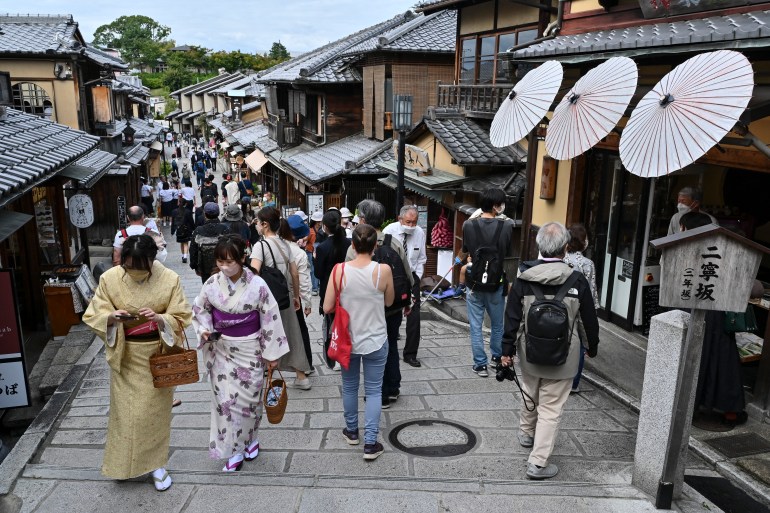
Kumi Kato, a tourism professor at Wakayama and Musashino universities, said the government has made moves in the right direction – such as organising cross-ministry meetings on spreading the benefits of tourism – but there is much work to be done.
“Destination wellbeing should be the goal and benchmarking concept,” Kato told Al Jazeera.
“Promoting the night and early morning economy and secondary destinations will disperse tourism into regional areas but that alone cannot lead to successful regional tourism.”
“It’s critical that the target should be clearly set… high-end tourists, or tourists with wealth, are often talked about, but it should not be misunderstood that only wealthy tourists are valuable,” Kato added.
“Value should be added to high-quality products and authentic experiences [which will] raise visitor spending rather than increase numbers. The government does set a target stay – number of days – and spending per visitor, but strategically ‘what kind of tourists’ should be clearer.”
Japan tackles overtourism with restrictions for some iconic sites

Mar 27, 2024 • 5 min read
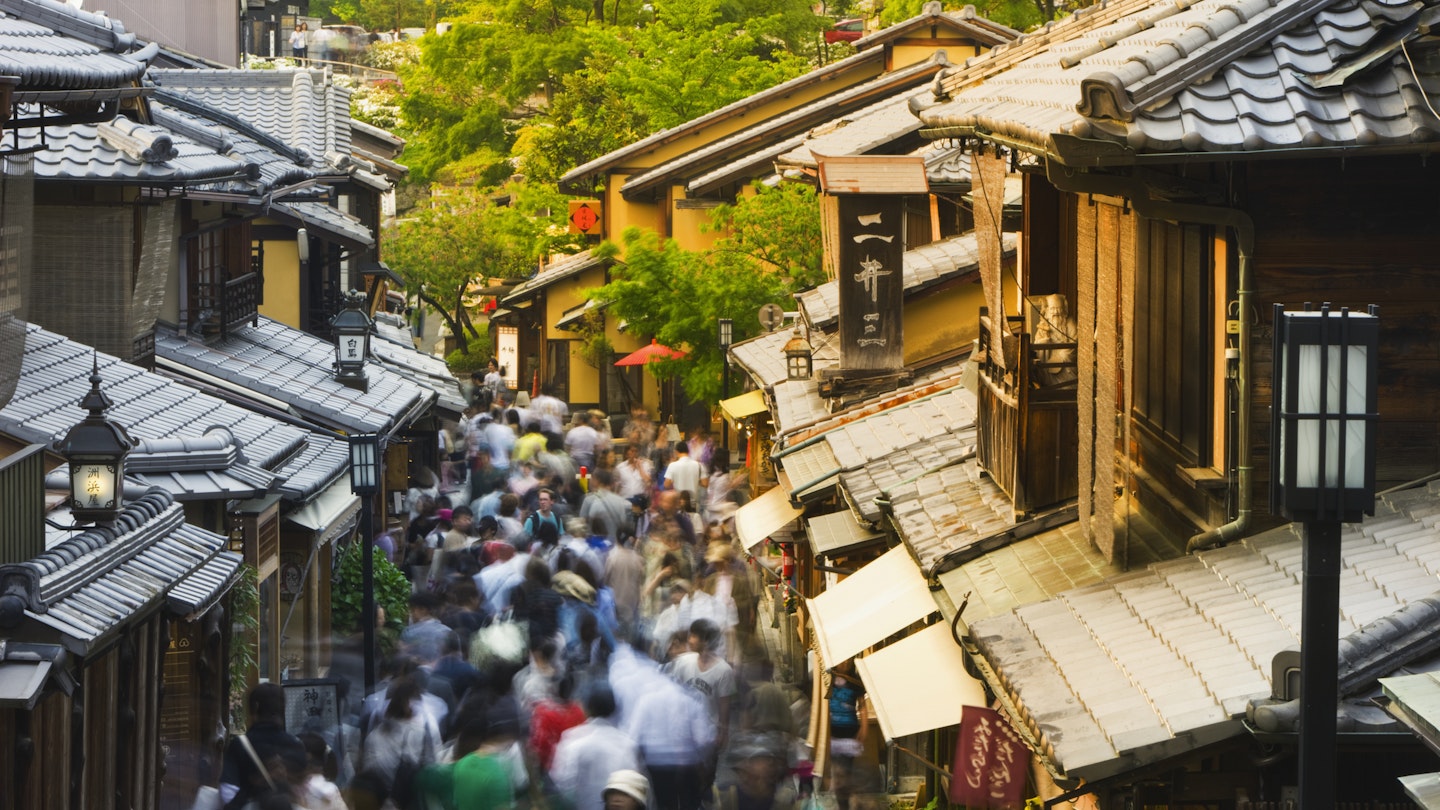
From restricted capacity to increased tourist taxes, options are being considered to counter overtourism in Japan © Jon Hicks / Getty Images
Japan is set to limit visitors at some popular attractions so that sites don't suffer from overtourism. Here's what you need to know.
Japan’s enduring popularity for overseas visitors is bringing consequences as the country seeks to balance the benefits of tourism and the impact on the areas visited, particularly at iconic destinations .
Recently, tourists have been banned from certain private streets in Kyoto ’s famous historic Gion district , traditionally home to the teahouses where geisha (geiko) and maiko (apprentice geiko ) performers work, largely due to antisocial behaviour. Unruly tourists have even been blamed for harassing geisha, with the Japan Times reporting that one had her kimono torn and another had a cigarette butt put in her collar.
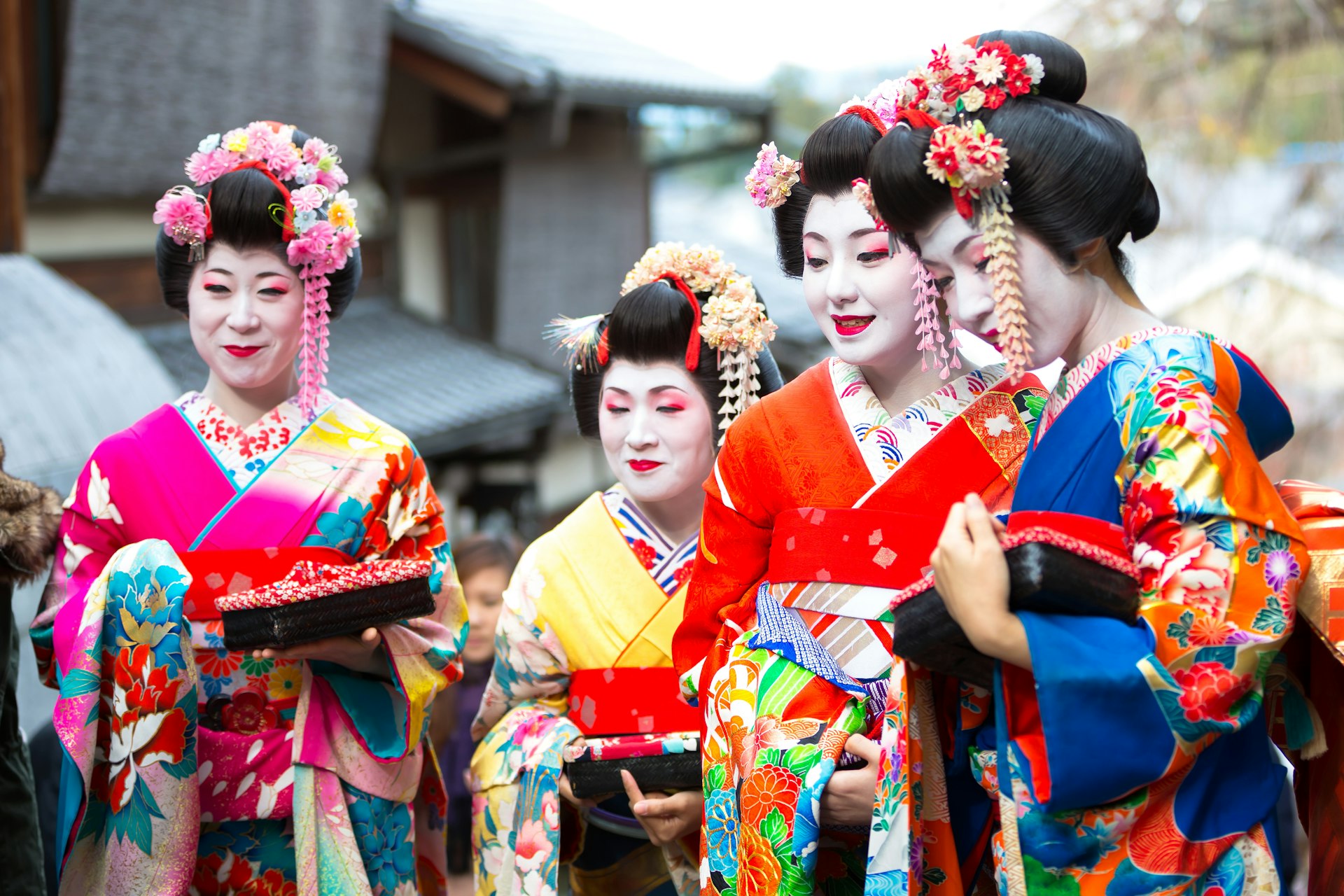
What new policies are being considered?
New fees and restrictions have already been introduced on climbing specific trails up Mt Fuji , in order to combat overcrowding, reduce the environmental impact — including cleaning up all the trash that results from so many people on the mountain — and improve safety for everyone doing the climb.
Kyoto is considering special tourist express bus routes, that will whisk visitors to the city’s most iconic sites in order to reduce overcrowding and improve efficiency on regular local buses, as well as to make what can be a complicated system easier for travelers.
Higher pricing for tourists is also being considered, having largely been absent in Japan, where many of the most famous cultural attractions are surprisingly inexpensive to enter. For example, Kyoto's famous golden temple Kinkaku-ji costs ¥400 for adults, which is about US$2.50. Changing this would be controversial, and it seems more likely that there would be increases in tourist taxes in order to fund services for visitors.
What are tourist taxes used for?
Local tourist taxes, usually collected as an extra on top of payment for your hotel, are common across many parts of the world, although these are relatively low in Japan compared with, say, destinations in the US like Honolulu and San Francisco.
These aim to fund some of the local costs associated with visitors: Kyoto’s is on a sliding scale based on the price of your hotel room, from ¥200–1000 a night (about US$1–7). The city of Hatsukaichi, home to the UNESCO-listed Itsukushima-jinja , often known as Miyajima and famous for its torii gate standing in the water off the island, recently implemented a ¥100 (about US$0.60) fee to fund the preservation and management of the site.
Japan already has a ¥1000 (about US$7) tourist departure tax that you may have never noticed as part of your plane fare.
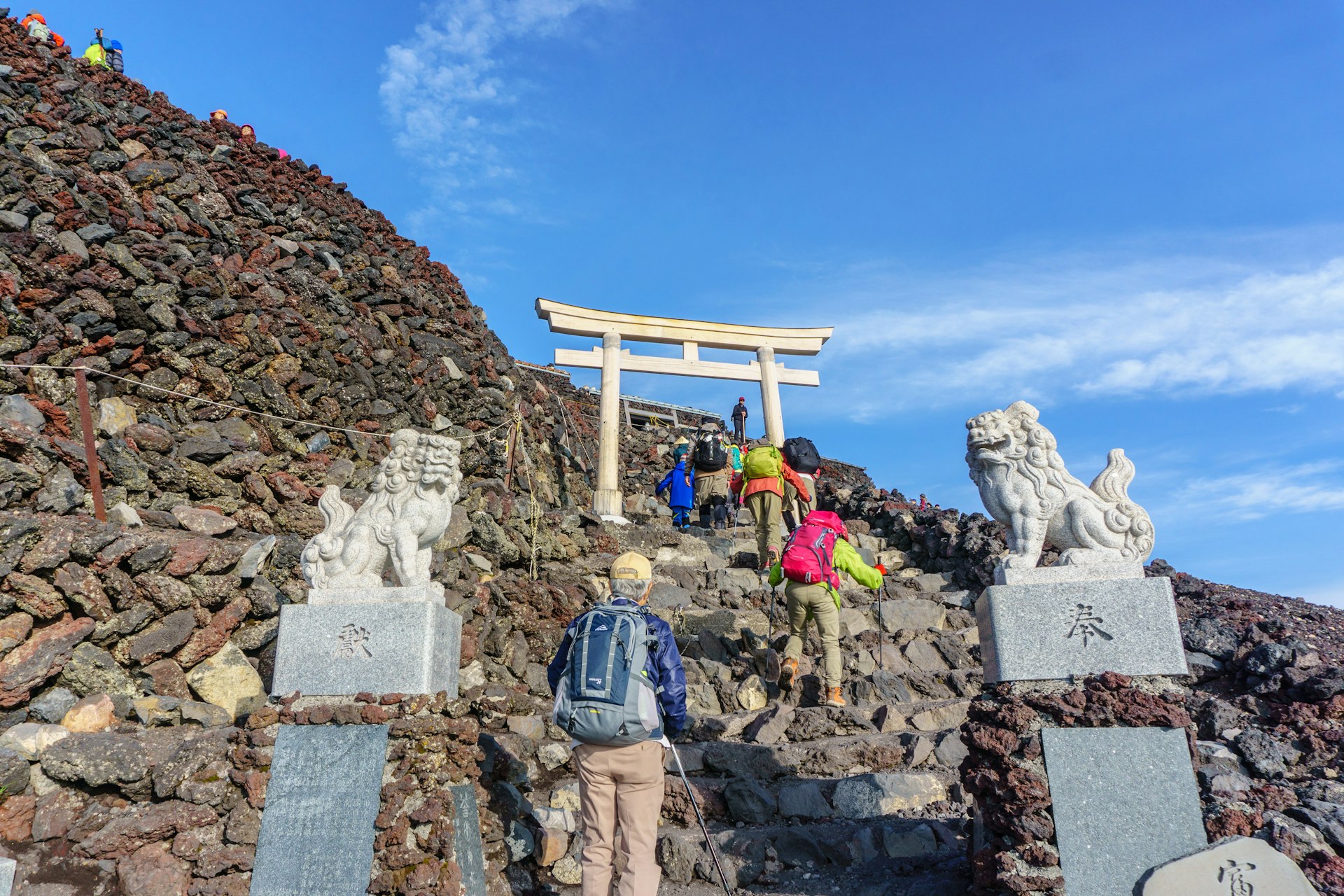
How is Japan likely to manage the problems of overtourism?
It seems unlikely that Japan will curtail its overall number of visitors because of overtourism. More likely, we’ll see more examples of capacity restrictions in specific places, like on Mt Fuji, where a certain number of people per day are allowed in.
This already happens in some cases in Japan: the famous Ghibli Museum in Tokyo and the new Ghibli Park in Nagoya both have a ticket maximum to maintain the quality of experience and to avoid overcrowding — the price for the former is just ¥1000 or about US$6.50, so it really is about capacity.
Some trains — specifically the fastest Nozomi and Mizuho Shinkansen between points west of Tokyo — are not included as part of the Japan Rail Pass , even though the slightly slower trains like the Hikari are. There’s only a few minutes' difference in terms of travel time, but at peak times there can be a half-dozen of the faster trains for every one of the slower ones. This is done for a variety of reasons, including that the clockwork-like efficiency of the shinkansen’s busiest section leaves only the briefest times for passengers to get on and off the train, and confused tourists (often carting large luggage with them) have been known to disrupt operations. Overseas visitors are therefore concentrated into the slightly slower Hikari and much slower Kodama services instead.
A more recent change is the 2020 introduction of the “Baggage 160” system , where travelers must reserve a space for larger pieces of luggage (over 160cm/63in in combined height, width and depth) on more popular bullet train lines or pay a carry-on fee. The change largely stemmed from the complications of visitors bringing large pieces of luggage onto trains that were not designed with large luggage storage. Japanese travelers tend not to bring large suitcases with them on trains, instead shipping them ahead to their destination via the excellent and inexpensive set of luggage delivery services like Yamato Transport , known as kuroneko (black cat) after its ubiquitous logo of a black cat carrying a kitten in its mouth.

How will this impact on group tours?
Keep an eye out for capacity management caps or even outright bans to potentially affect group tours first. These can be very unpopular with local people, and indeed with other visitors.
A tour bus full of visitors descending all at once can change the character of a place instantly, and that’s certainly the case in a lot of the most famous Kyoto temples and shrines like Kinkaju-ji, Ryōan-ji or Kiyomizu-dera . These groups often have a reputation for behaving disrespectfully, like talking loudly in places where quiet is expected, not following rules, and getting in the way of local people and more respectful travelers.
You’re unlikely to be affected as an independent traveler, and a smart tactic is to visit at times when these groups are either still making their way from their hotels, have been packed off for lunch, or are heading back at the end of the day — and to plan to explore the less-traveled corners of this fascinating country.
Explore related stories
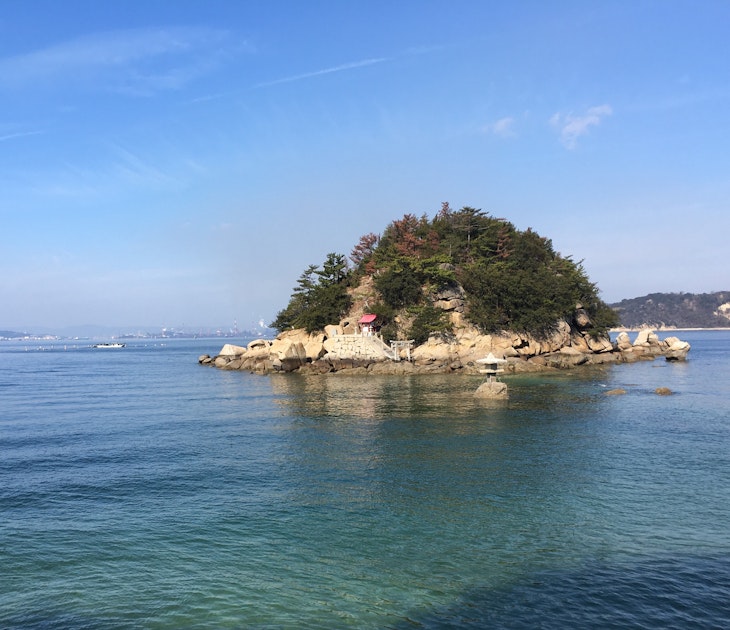
Mar 4, 2020 • 5 min read
Step away from Japan's big cities and sample some slow travel in and around the Seto Inland Sea.
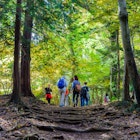
Feb 5, 2020 • 4 min read

Apr 2, 2024 • 10 min read

Mar 28, 2024 • 7 min read
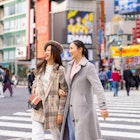
Mar 21, 2024 • 9 min read

Feb 21, 2024 • 7 min read

Feb 11, 2024 • 11 min read
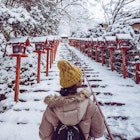
Jan 18, 2024 • 8 min read
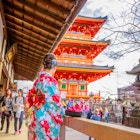
Dec 10, 2023 • 6 min read

Mar 7, 2023 • 7 min read
8 New Tourist Attractions Opening in Japan 2024

Misty Fujii is a Canadian who moved to Osaka, Japan, in 2019 and married her Japanese sweetheart. In 2022, they had a baby and moved to Fukui for the clean country air. She is a DJ who teaches English part-time and writes to share Japan with the world. She gets excited about collecting vintage vinyl records, food from all countries, travelling, and renovating her traditional Japanese house.
This post may contain some affiliate links. When you click through and make a purchase we may receive some commission, at no extra cost to you.
This year promises to be exciting, with new attractions opening in Tokyo and all over Japan. If you haven’t made travel plans yet, you’ll want to make them after learning about these upcoming sights getting ready to open! Whether you’re a fan of Nintendo, digital art, shopping until you drop , or more, don’t miss this list of 8 new tourist attractions opening in Japan in 2024.
1. Immersive Fort Tokyo
2. usj donkey kong country addition, 3. teamlab borderless, 4. fantasy springs at tokyo disneysea, 5. senkyaku banrai, 6. ghibli park fully opened, 7. tokyu plaza harajuku harakado, 8. hokkaido east trail, japan wonder travel tours , other articles you might be interested in.

Tokyo’s Odaiba is getting a makeover this spring, starting with Immersive Fort Tokyo ! As the world’s first immersive theme park, guests can experience the park as the story’s protagonist, not just an observer. Inspired by London’s interactive theatre scene, Immersive Fort Tokyo is a portal to entirely new worlds. With 30,000 square meters packed with 12 unique attractions, six restaurants, and plenty of adventure, there is so much to ignite the imagination and fuel your fun.
You become the hero (or villain, depending on your choices)! Crack the case alongside Sherlock Holmes, explore the bustling streets of Edo-era Japan, or even join the Tokyo Revengers gang in an epic escape room adventure. Feeling dramatic? The Party Festa world lets you be the star of your own romantic comedy, complete with singing, dancing, and applause (hopefully not all fake). Even the restaurant is a full-fledged cabaret, serving up Instagram-worthy dishes and dazzling stage shows. So, whether you’re a mystery buff, a history geek, or love a good puzzle, Immersive Fort Tokyo has something for everyone.
When: February 2024

Super Nintendo World at Universal Studios Japan will get a Donkey Kong-sized upgrade this spring! Guests can explore the world’s first Donkey Kong Country theme park, expanding Super Nintendo World by a whopping 70%. Imagine blasting out of a barrel cannon and racing through the jungle on a thrilling mine cart ride, just like in the classic games! You’ll also get to explore the meticulously recreated jungle home of Donkey Kong and his gang, complete with themed food , merchandise, and enough banana-related shenanigans to make the whole family happy.
When: Spring 2024

teamLab Borderless is back, and it’s bigger (and more Instagrammable) than ever! After a temporary closure, the world’s first digital art museum is reopening its doors in Tokyo’s swanky Azabudai Hills. While you’ll still find your favorite mind-bending exhibits like the Forest of Lamps, get ready to be blown away by two new additions: “Bubble Universe” and “Megalith Crystal Formation.” These immersive experiences promise to push the boundaries of art and technology even further, making teamLab Borderless a truly one-of-a-kind experience.
(And don’t worry, teamLab Planets is still open!)
When: February 2024

Tokyo DisneySea is about to get a magical makeover with the arrival of Fantasy Springs. This epic expansion whisks you to the beloved worlds of Frozen, Tangled, and Peter Pan, each meticulously recreated for maximum immersion. Imagine exploring Arendelle with Elsa and Anna, gliding through Rapunzel’s lantern-lit forest, or becoming a Lost Kid in Never Land; the adventures are endless! Fantasy Springs boasts four thrilling attractions, delectable restaurants, charming shops, and a luxurious hotel overlooking the DisneySea park.
However, there’s a catch: access to this enchanted land requires a special pass. Guests staying at the new hotel or purchasing specific vacation packages can grab a “1-Day Passport: Fantasy Springs Magic” and unlock DisneySea’s whole new world.
When: June 6, 2024
Tokyo opened the ultimate time-traveling spa complex. Senkyaku Banrai isn’t just an onsen oasis; it’s a portal to Edo-period Tokyo! Imagine strolling down bustling streets like Toyosu Menuki Odori, indulging in finger-licking street food , or exploring hidden gems in the Mekiki Yokocho alleyway. Meanwhile, the Tokyo Toyosu Manyo Club offers a full spa with onsen. Fresh hot spring water is delivered multiple times daily, and both the men’s and women’s areas boast five stunning baths, including breathtaking rotenburo (outdoor baths) with Tokyo skyline views . The best part? This haven caters to night owls and jet-lagged travelers by being open 24/7.
Want to really explore the Toyosu area? Try a fun and educational tour of the market first! ▶ Toyosu wholesale market explore and Sushi making special tour
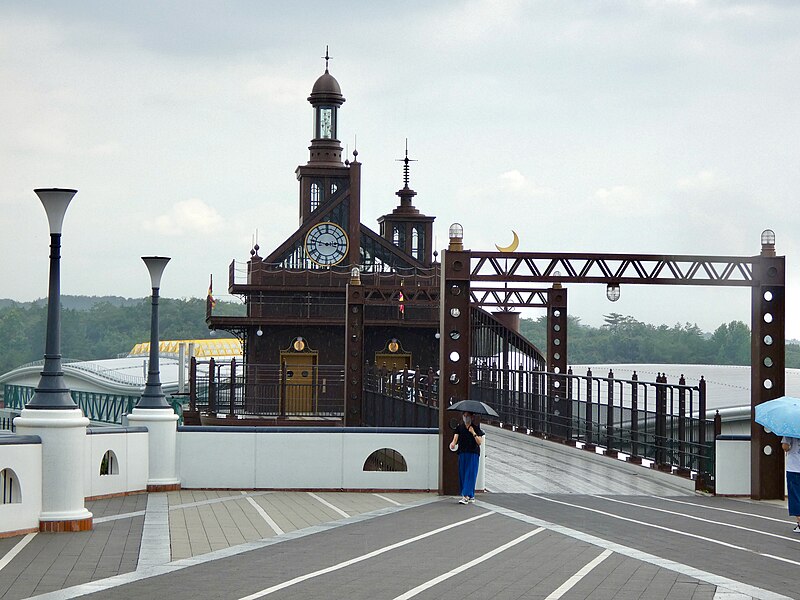
Ghibli fans, the wait is over! The final chapter of Ghibli Park in Aichi prefecture opens this spring with the Valley of Witches, the magical world inspired by iconic Studio Ghibli films. Wander through iconic locations like Kiki’s Delivery Service bakery and Howl’s Moving Castle, or spot a real-life Catbus as it whisks you around the park! Take a spin on the whimsical carousel, soar on the Flying Machine ride, and lose yourself in the enchanting Ghibli universe. With every corner brimming with movie magic, the Valley of Witches promises an unforgettable adventure for all ages. Of course, the rest of the park is also incredible, with the Hill of Youth, Mononoke Village, Dondoko Forest, and so much more for Ghibli movie lovers .
When: March 16, 2024

The brand new Tokyu Plaza Harajuku Harakado opens this spring, adding a splash of nature with its rooftop vertical garden. This isn’t just any shopping complex, it’s part of a significant district revamp, coming hot on the heels of Harajuku station’s stylish upgrade. Designed by architect Akihisa Hirata, the building boasts nine floors with retail therapy , restaurants, a swanky penthouse, and more. Shopaholics, rejoice – there will be plenty of stores to explore, and foodies won’t be disappointed with two floors dedicated to deliciousness. But the best is on the second floor and basement: the second floor will house Cover, a community space perfect for chilling and flipping through a magazine archive spanning decades. And a public bathhouse is set to open on the basement level, bringing back a beloved Tokyo tradition in the heart of Shibuya !
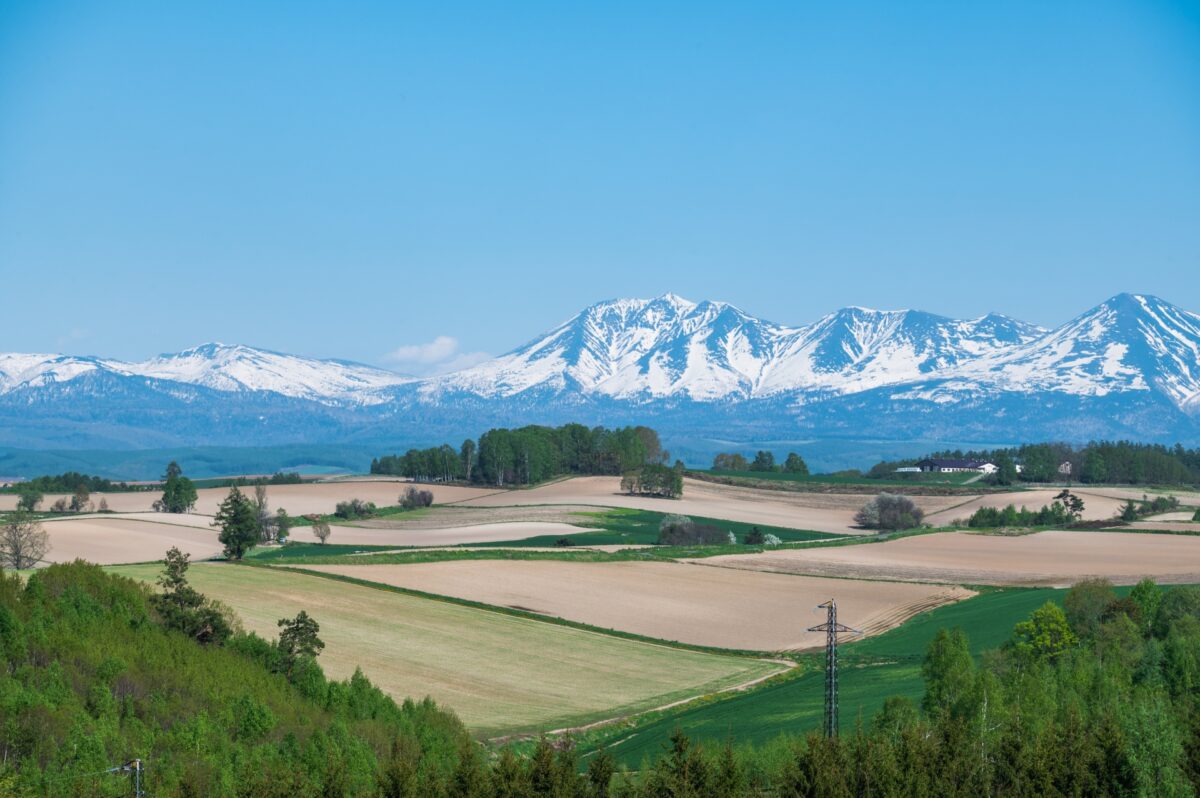
Hokkaido has an all-new adventure for hiking and nature enthusiasts: the Hokkaido East Trail! This epic 370km sightseeing route stretches across the stunning Furano, Tokachigawa Onsen , Shiretoko, and Kushiro districts, taking you on a journey through some of Hokkaido’s most breathtaking landscapes. Trek through majestic national parks like Akan Mashu, Kushiro Shitsugen, and Shiretoko. Picture yourself surrounded by vast marshlands, towering volcanoes, crystal-clear lakes, and ancient forests teeming with life; the sights are incredible! Just remember, Hokkaido experiences harsh winters, so lace up your hiking boots for spring, summer, or early autumn adventures if you want to skip the snow!
When: October 2024
With so many exciting new openings in Japan, which one will you visit first?
Japan Wonder Travel is a travel agency that offers guided tours throughout Japan. From private walking tours to delicious Food and Drink tours, we can help you organize the best tours just for you! If you want to explore Japan and learn more about the history and backstories of each area you are visiting, our knowledgeable and friendly English speaking guides will happily take you to the best spots! In addition, we can provide you with any assistance you may need for your upcoming trip to Japan, so please feel free to contact us if yu have any questions or need some help!
▶ Tokyo Tsukiji Fish Market Food and Drink Tour Explore the most lively and popular fish market in Tokyo and try some of the local’s favorite street foods and sake with one of our friendly and knowledgeable English speaking guides!

▶ Tokyo 1–Day Highlights Private Walking Tour (8 Hours) There’s no better way to explore an area than taking a tour with a knowledgeable local guide. You will have the chance to learn about the history and interesting background stories of Tokyo, as well as discover some hidden gems which can be hard to do without a guide.

▶ Mt. Fuji Day Trip Bus Tour from Tokyo Experience the breathtaking views of Mt. Fuji by visiting the highlights of the area on our guided sightseeing bus tour! Departing from Shinjuku in central Tokyo, you can travel comfortably to all of the best spots in the area by bus.

Follow us on Instagram , Facebook , Twitter , and TikTok for more travel inspiration. Or tag us to get featured!
Happy traveling!
Stay informed of the best travel tips to Japan, the most exciting things to do and see, and the top experiences to have with the Japan Wonder Travel Newsletter. Once every two weeks we will introduce you to our latest content.

- Popular destinations
- Hidden places in Japan
- Tours and workshop
- Food and drink in Japan
- Itinerary in Japan
- Places to visit in Tokyo
- Food and drink in Tokyo
- Seasonal events
- Tours & workshops
- Tokyo This Week
- Day trip from Tokyo
- Itinerary in Tokyo
- Places to visit in Kyoto
- Food and drink in Kyoto
- Itinerary in Kyoto
- Day trip from Kyoto
- Travel tips
- Accommodation
- Cultural tips
- Transportation
- Tokyo Tours
- Kyoto Tours
- Kimono Rental
- Fukushima Tours
- Mount Fuji Tours
- Tour Package
- Media Kit(English/日本語)
We've detected unusual activity from your computer network
To continue, please click the box below to let us know you're not a robot.
Why did this happen?
Please make sure your browser supports JavaScript and cookies and that you are not blocking them from loading. For more information you can review our Terms of Service and Cookie Policy .
For inquiries related to this message please contact our support team and provide the reference ID below.

IMAGES
VIDEO
COMMENTS
The official site of Japan National Tourism Organization is your ultimate Japan guide with tourist information for Tokyo, Kyoto, Osaka, Hiroshima, Hokkaido and other top Japan holiday destinations. We offer travel information to make your Japan travel more comfortable and enjoyable.
Japan will reinstate visa-free travel on October 11 for travelers from more than 68 countries, including the US, Canada, the UK, Ireland, Australia, Mexico, Argentina, Singapore, Thailand and more. If a passport holder a country on the visa-waiver list, you won't need a visa to travel to Japan if you're staying for less than 90 days.
From 11th October 2022, visa-free travel resumed and all arrival caps were removed as well. We have all the answers you need about Japan's full border opening on 11th October. As the Japan experts, we've sought all the requirement information directly from Japanese government sources and broken them down into easy-to-understand sections.
Even so, Japan resumed visa issuance for tourism purpose from 2022, June 10. However, a travel agency based in Japan must act as a sponsor for any touristic trip. The agency must declare each of their travelers beforehand through the Japanese immigration's ERFS system, in order to get a PDF authorization called "UketsukeZumisho".
Tourist visa had been reintroduced on June 2022 and it was necessary to get sponsorship by a travel agent.. From October 11, the visa waiver system between Japan and 68 other countries in the world is restored. From this date on, it will be possible again to stay up to 90 days in Japan, without tedious paperwork at the Embassy or the Consulate: you will just have your passport stamped upon ...
Japan removes strict Covid-19 travel curbs, fuelling hopes a tourist boom will reinvigorate the economy Guardian staff and agencies Mon 10 Oct 2022 23.22 EDT Last modified on Tue 11 Oct 2022 07.34 EDT
Image credit: Kentaro Toma Previously, in order to enter Japan, international travellers had to be part of a pre-booked and guided tour led by a tour conductor. On 31st August, Prime Minister Kishida Fumio announced that with effect from 7th September, non-guided packaged tours will be allowed. In other words, travellers will still have to book travel packages from authorised tour agencies ...
In 2022, the ways to enjoy this all-time Japan favourite will be doubling and tripling thanks to a slew of new openings including a state-of-the-art viewing platform and sky walk experience at the Fujiyama Tower in the Fuji-Q highlands theme park, the new TOCORO Mt Fuji Camp & Glamping facility in Yamanashi and a complete refurbishment of the ...
The effect of Pre-Clearances (i.e. visa exemptions) granted by the Japanese Government to APEC Business Travel Card (ABTC) issued by the following countries was also resumed on October 11, 2022. For more information on the APEC Business Travel Card (ABTC), please refer to the link below: APEC Business Travel Card (ABTC)(Japanese)
official SNS. The easing of entry restrictions toward the end of the year meant there was a big increase in the number of international visitors to Japan in 2022, rising to 3.8 million. However ...
September 14, 2022. Credit: Depositphotos. After plenty of false starts, Japan is set to fully reopen its borders to tourism next month after more than two years of strict COVID-19 border ...
Ad Feedback. That is especially striking in Japan, which reopened to much fanfare in June 2022, just in time for peak travel season. Between June 10 and July 10, the country welcomed about 1,500 ...
Japan, one of the world's last major holdouts during the pandemic, is dissolving its Covid-19 restrictions and opening the door back up to mass tourism in October. ... September 22, 2022 ...
Travel Japan - The Official Japan Guide. None U.S.-JAPAN TOURISM YEAR 2024. None Go Beyond Japan's Major Cities: Hokuriku Shinkansen Extension in 2024. None Sakura and Beyond: Famous Japanese Flowers to Check Out in 2024. None "Open the Treasure of Japan" in 2023 and Beyond. None ...
April 2024. Japan is finally open! Travelers from most countries can now enter Japan without applying for a visa in advance. Best of all, there are NO Covid protocols to enter Japan: You do NOT need proof of vaccination or a negative test to enter Japan. Kiyomizu-dera Temple with cherries in full bloom: f11 photo / Shutterstock.com.
The group has long called for moderation in Kyoto's economic development. In 1991, it took out a full-page ad in The Times opposing the construction of new, high-rise hotels, which it said would ...
Japan 2022. News & Updates Join our Japan fan community newsletter for inspiration, giveaways, monthly updates on borders and how to enjoy Japan while we wait! More Info. En Route to the Oscars Join us on a life-changing Japan road trip, based on Ryusuke Hamaguchi's BAFTA winning and Oscar-nominated epic, Drive My Car. More Info.
1.4 Overseas Residents' Visits to Japan by country or region, 2022 ... Source : Japan National Tourism Organization (JNTO) Figures until 2021 are final. Figures in 2022 are provisional. Tweet. Download time series dataset ...
While other countries slowly began to relax their travel restrictions in 2021, Japan didn't full reopen until October 11, 2022. The country didn't lift its vaccine and documentation requirements ...
It is highly recommended to purchase international travel medical insurance for your trip to Japan. Overseas travel medical insurance helps you in case of emergency. ... (November 1, 2022) Others. Japan's Pre-Entry Tuberculosis Screening (April 3, 2020) Visitors to Miyagi, Fukushima, and Iwate prefectures (PDF)
In 2019, 9.2 million Chinese tourists travelled to Japan, accounting for nearly one-third of all visitors, spending 1.8 trillion yen ($12.2bn) in the process. "Our head office is located in the ...
Japan is set to limit visitors at some popular attractions so that sites don't suffer from overtourism. Here's what you need to know. Japan's enduring popularity for overseas visitors is bringing consequences as the country seeks to balance the benefits of tourism and the impact on the areas visited, particularly at iconic destinations.. Recently, tourists have been banned from certain ...
4. Bring fun socks. "Bare feet in Japan is a big no-no. Travelers should expect to remove their shoes often in Japan and should always have socks on when they do so. The removal of shoes might ...
If you haven't made travel plans yet, you'll want to make them after learning about these upcoming sights getting ready to open! Whether you're a fan of Nintendo, digital art, shopping until you drop, or more, don't miss this list of 8 new tourist attractions opening in Japan in 2024. Table of contents. 1. Immersive Fort Tokyo.
Until now, there has been no way for digital nomads to work legally in Italy long-term. However, a new visa for remote workers was signed into Italian law on 28 March 2022, as is now effective as ...
Thailand's Senate sent a same-sex marriage bill previously cleared by the lower house to a panel for further scrutiny, as the Southeast Asian nation seeks to become the region's first to ...